|
The 1914 German arsenal grenades technology, although a little bit more sophisticated than the French ones, is proving enough the little interest given to this kind of weapon before its necessity was demonstrated by the early positions war. In Germany, the improvised 'hairbrush grenades' that were used by all the armies in war gave birth to the mighty stick grenades used by the Kaiser's troops, declined in numerous variants, and used until 1945.
Other interesting war developments quickly imposed themselves as well, such as the strange lenticular percussion grenades or the compact and handy 'egg' grenades, not to forget the succesful copy of the famous French 'VB' rifle grenade, or the grenade launchers projectiles.
Kugelhandgranate 1913 |
||
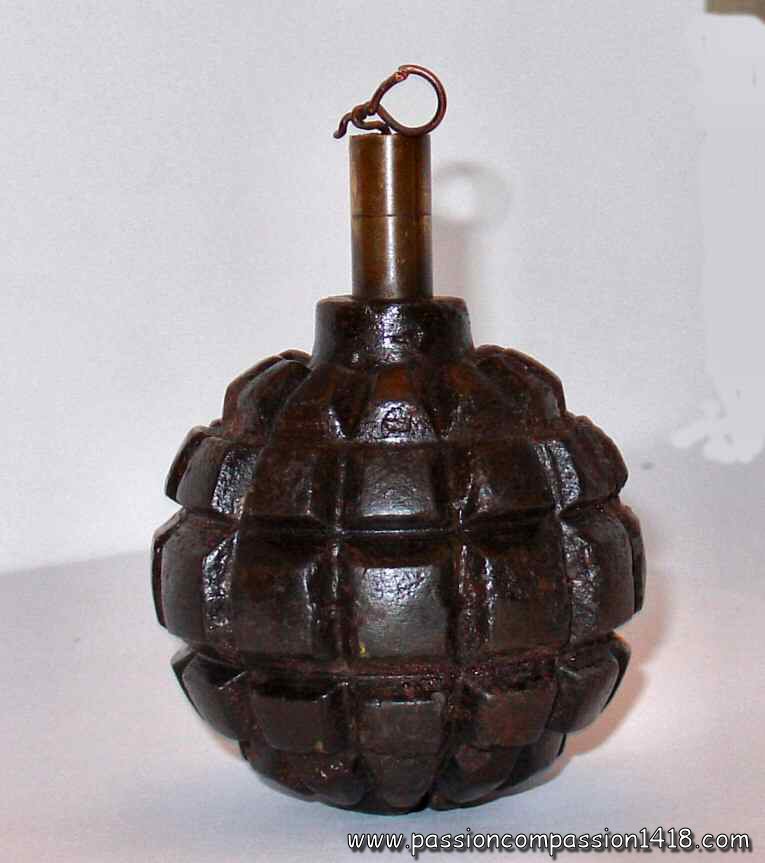 |
Careful observers of the Russo-japanese 1904 war, several European armies including France and Germany recognized the need to pay some interest again to this 400 years old weapon almost forgotten. The 'Kugelhandgranate 1913' is a first development (dated 1913) of the previous centuries ball grenades. |
|
Kugel grenade model 1913 with its traction igniter model 1913. See the brass ring that one should remove to trigger the igniter delayed explosion. |
||
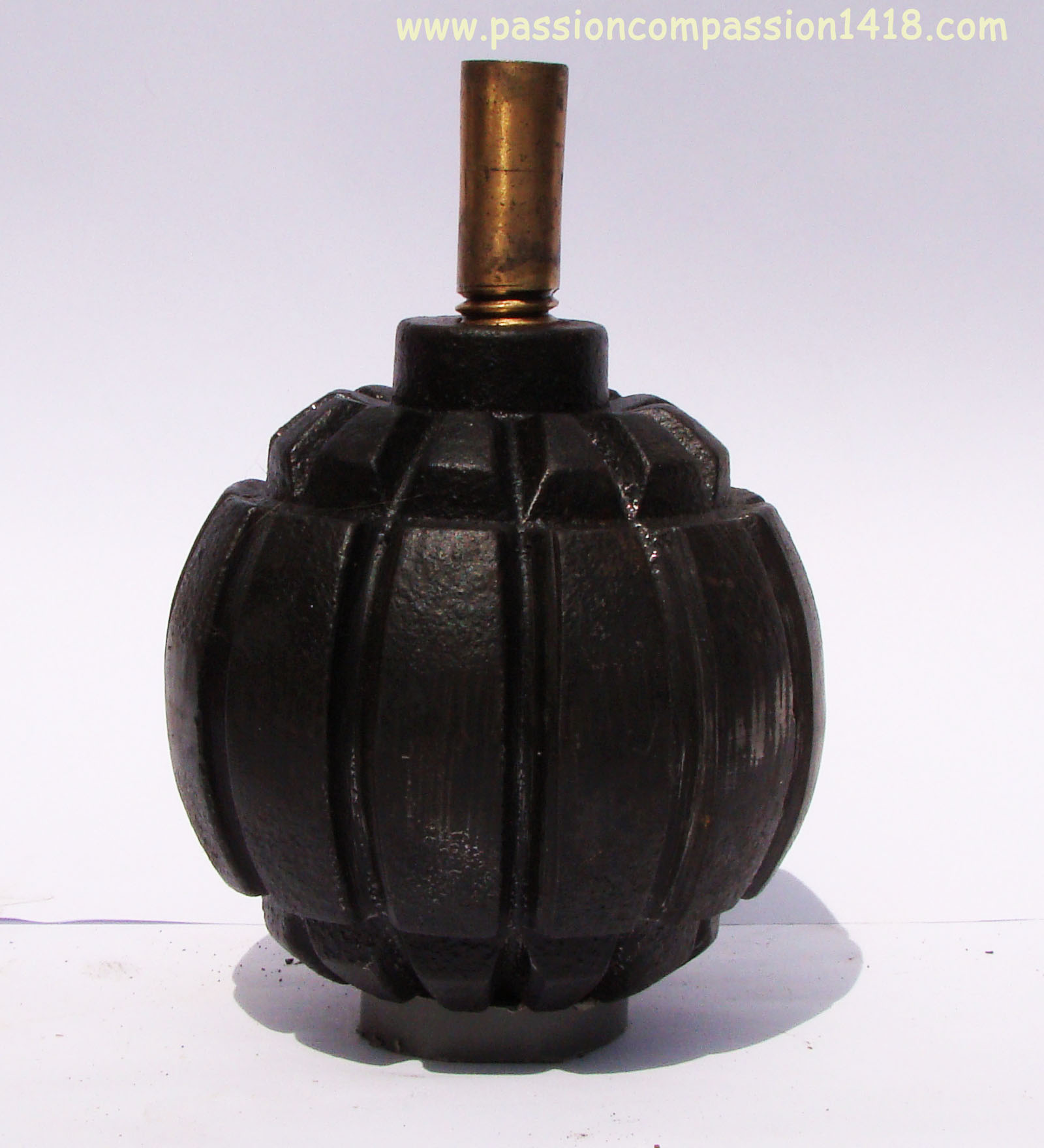 |
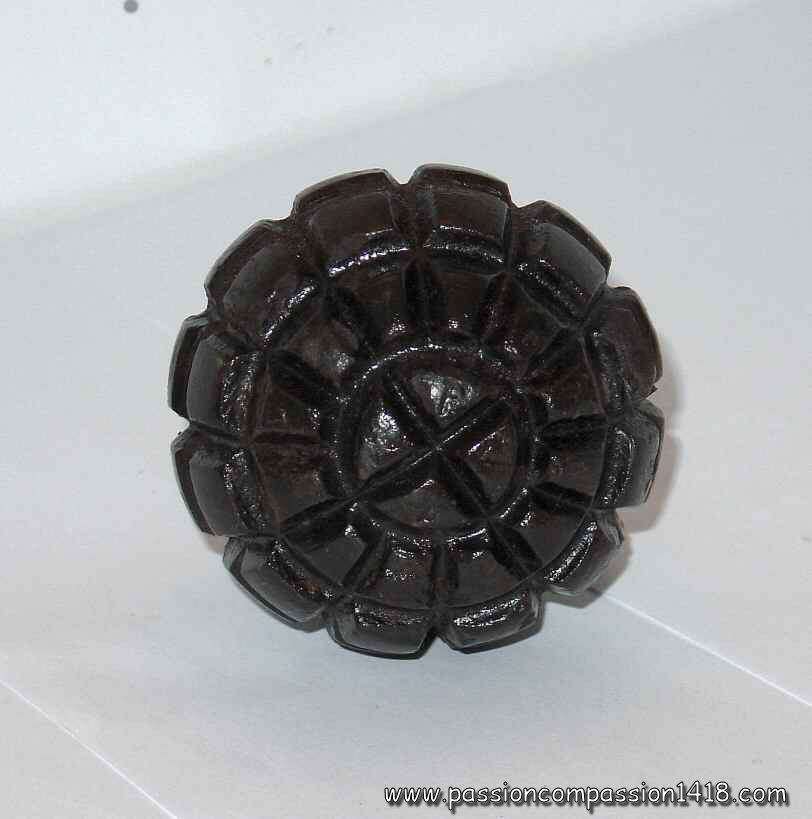 |
|
Kugel grenade model 1913 |
Kugel grenade model 1913, bottom view |
|
 |
||
Kugel grenade model 1913, dismounted igniter |
||
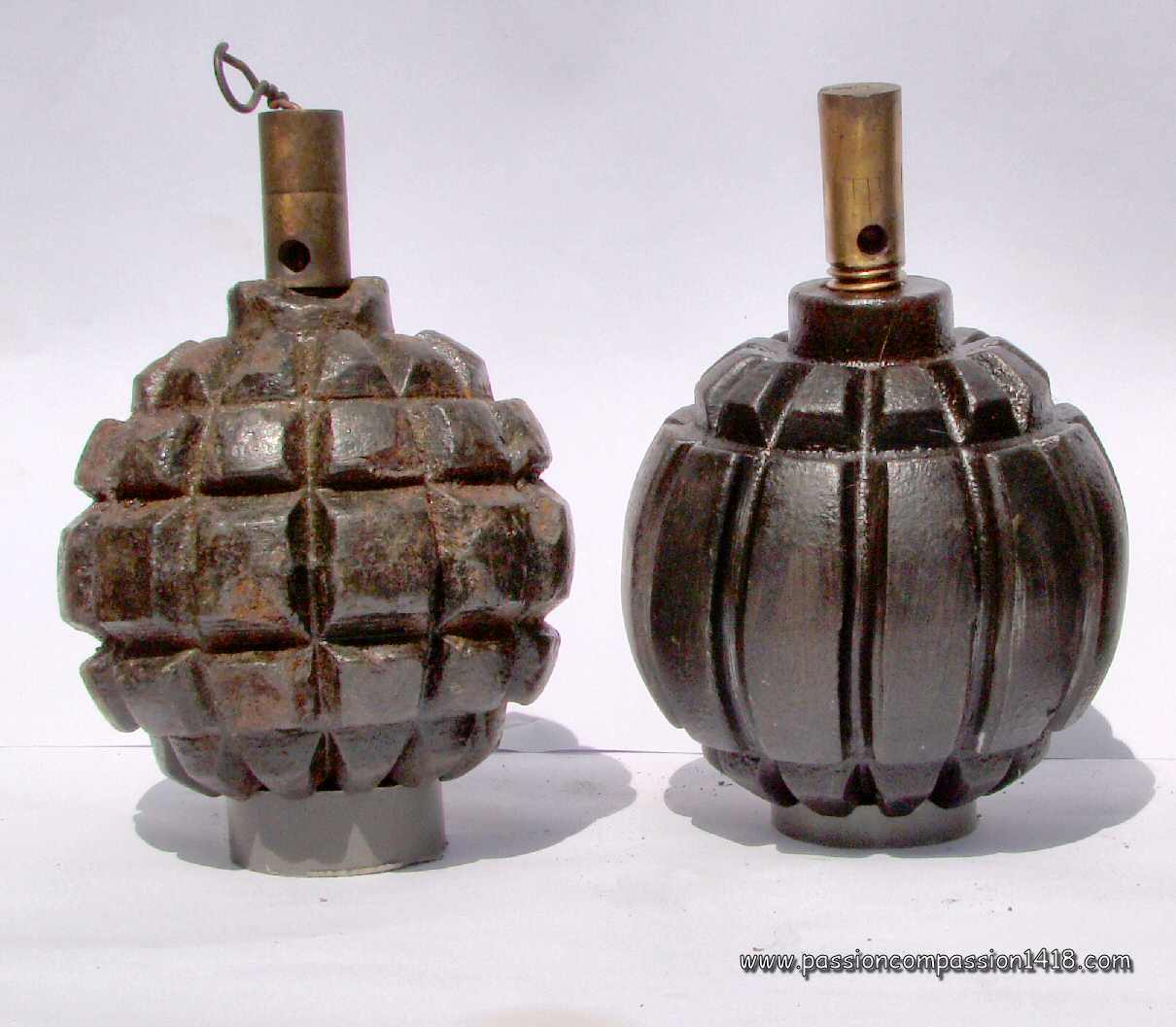 |
||
Kugel grenade model 1913, a rare simplification of the machining pattern has also been produced |
||
 |
||
Kugel grenade model 1913 - Wartime scheme from a German manual |
||
Return at the top of the page |
||
Kugelhandgranate 1915 n/A |
||
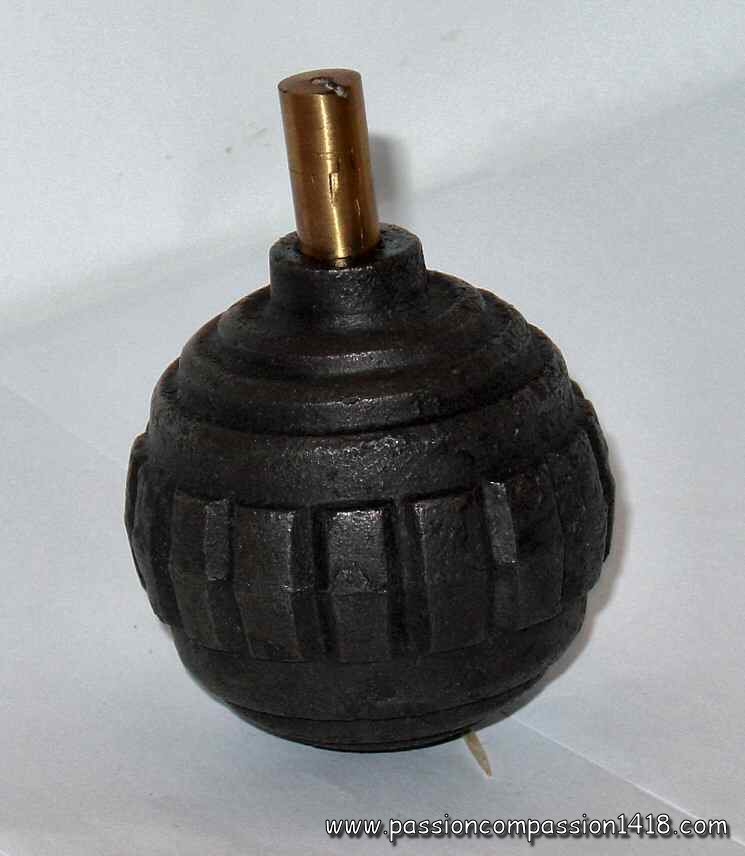 |
In 1915 a simplified fragmentation pattern of the 1913 Kugel grenade is adopted, in order to improve its massive serial production ability. This Kugel grenade Model 1915 ('Kugelhandgranate N/a') only difference to the older type was the outside grooves pattern easier to machine, but was keeping all the other characteristics.
|
|
Grenade Kugel modèle 1915. |
||
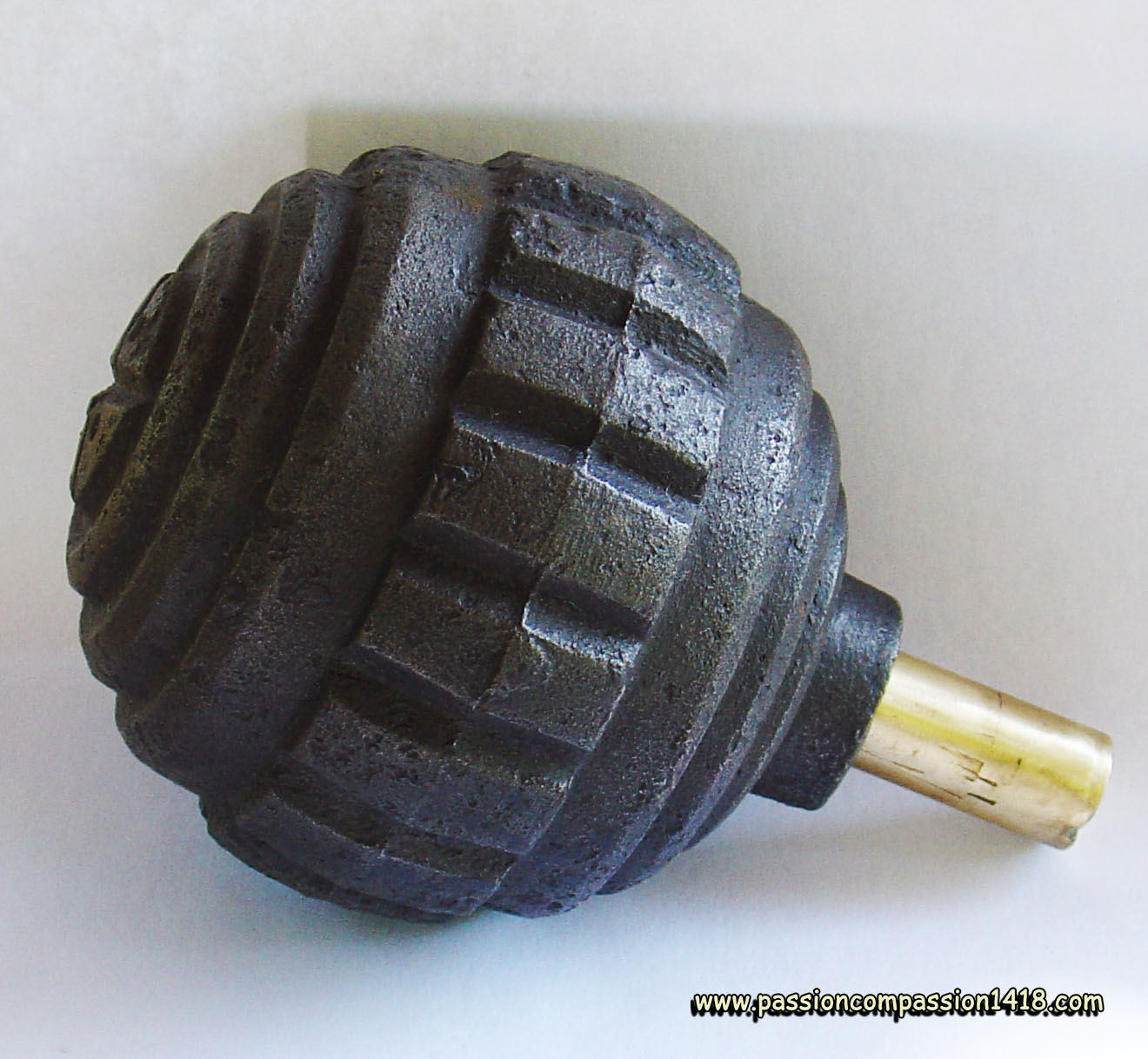 |
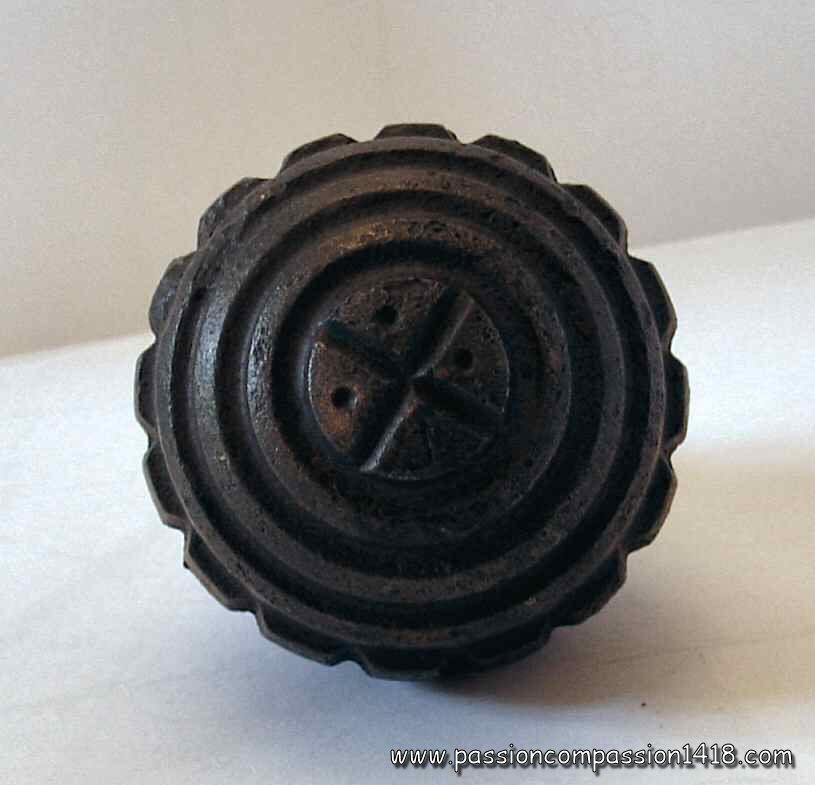 |
|
Kugel grenade model 1915 with ots traction igniter M 1913. |
Kugel grenade model 1915, view from below |
|
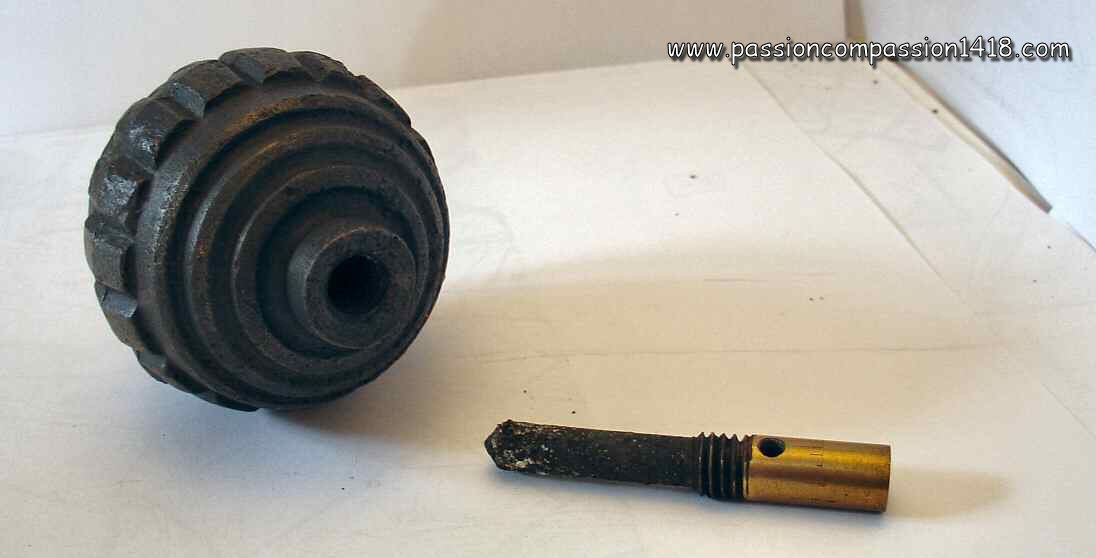 |
||
Kugel grenade model 1915, dismounted igniter |
||
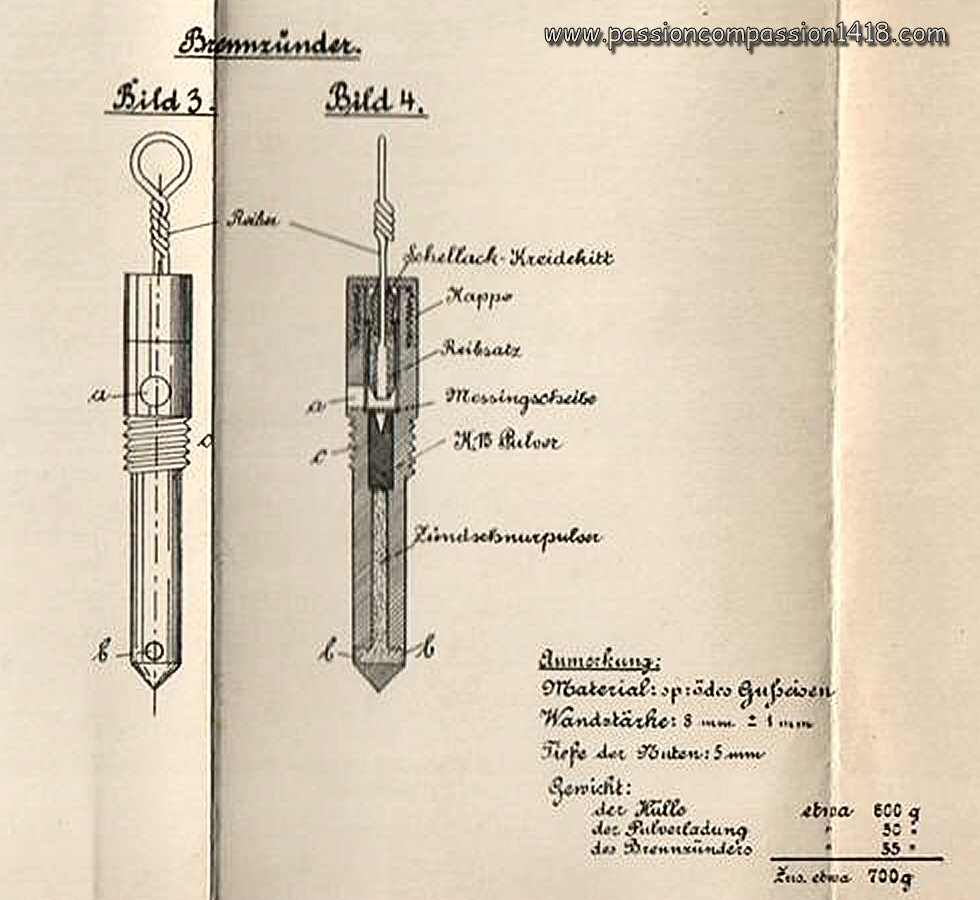 |
||
Kugel grenade - bronze model 1913 traction igniter with 5 seconds delay - wartime scheme from a German manual |
||
Return at the top of the page |
||
Offensive Diskushandgranate M 1915 |
||
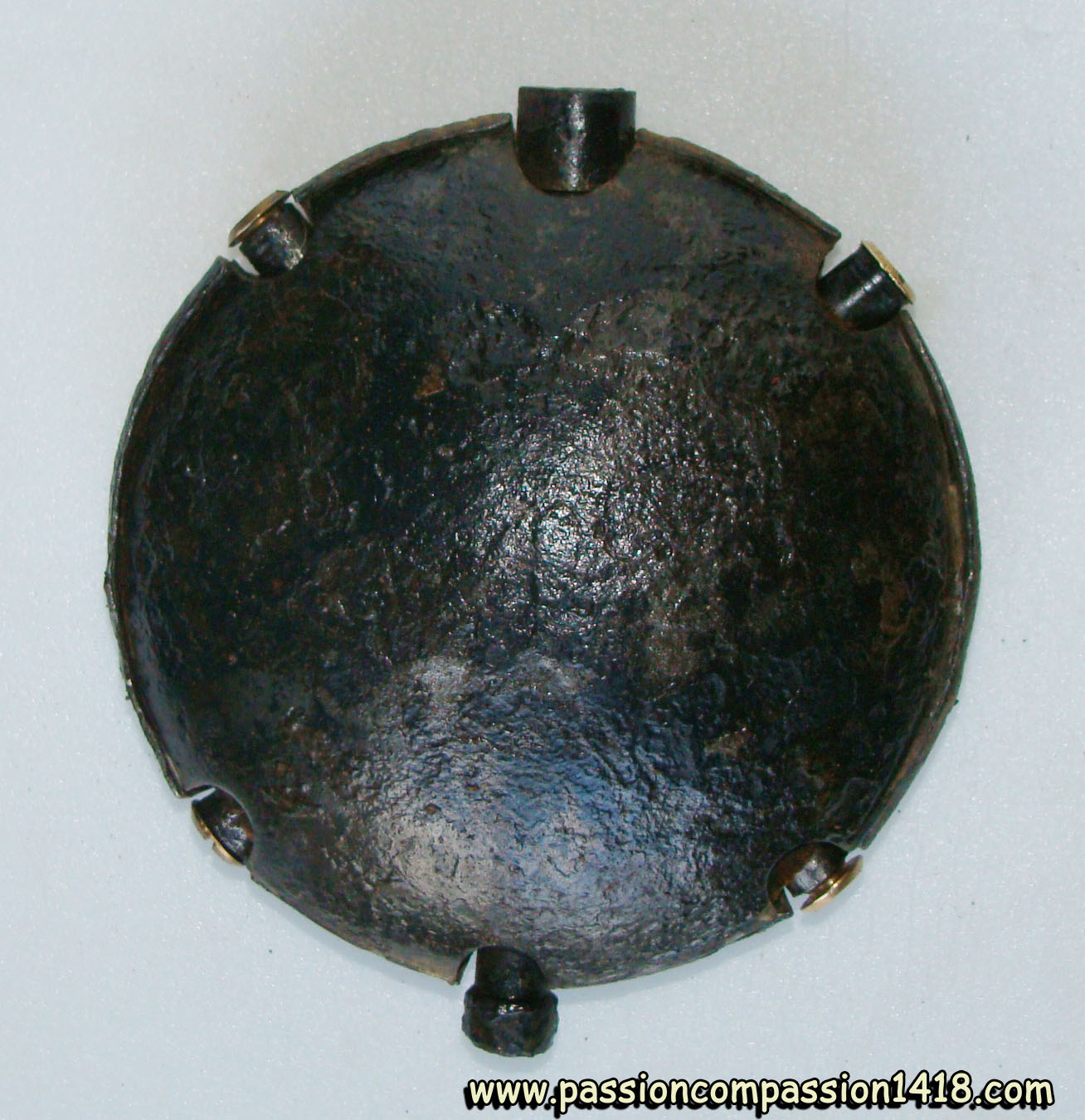 |
The trenches war reinforced the long time expressed need for grenades exploding at impact, leaving no opportunity to the ennemy to grab it and send it back to the launcher like a conventional 'time' grenade. In Germany, an original and efficient answer was bring as soon as 1915 with the 'Discushandgranaten' (called 'turtle grenades' by the allied soldiers). The offensive model was made of two thin steel plate shells, crimped together. |
|
Offensive turtle grenade |
||
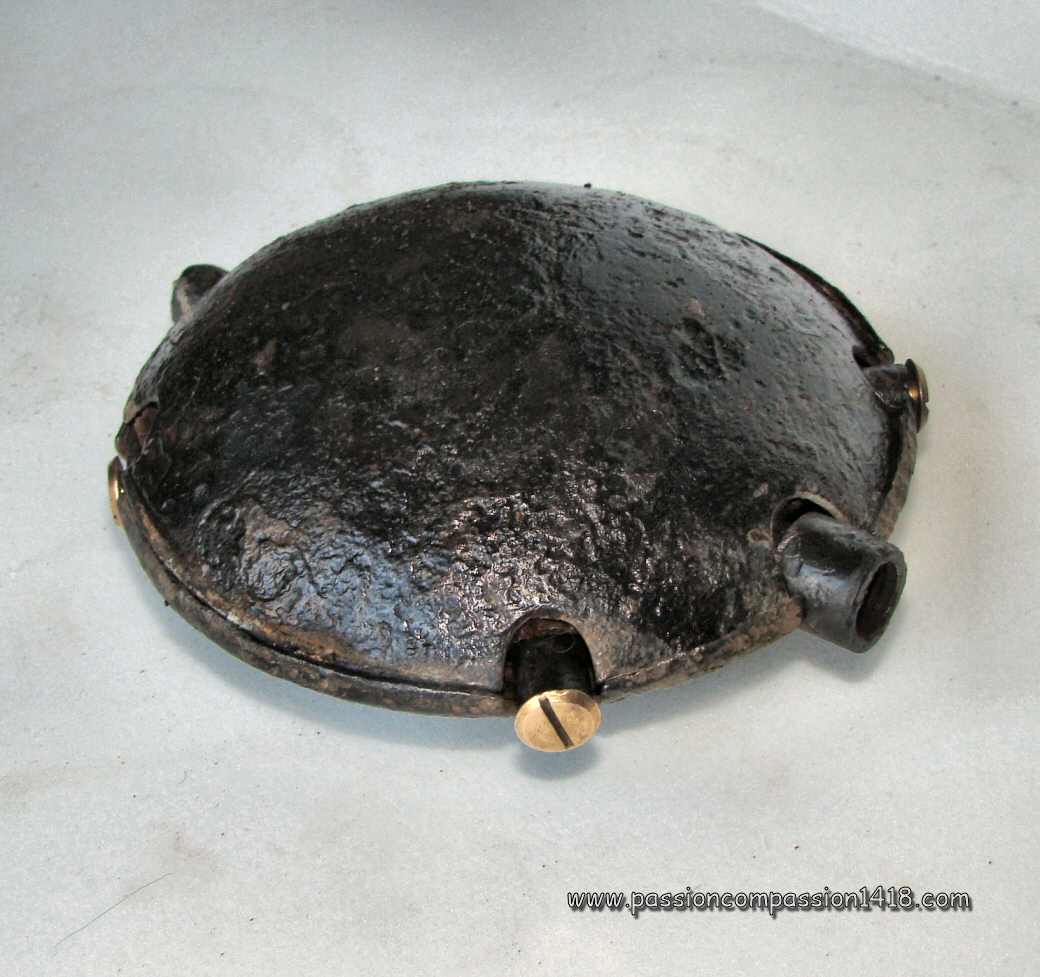 |
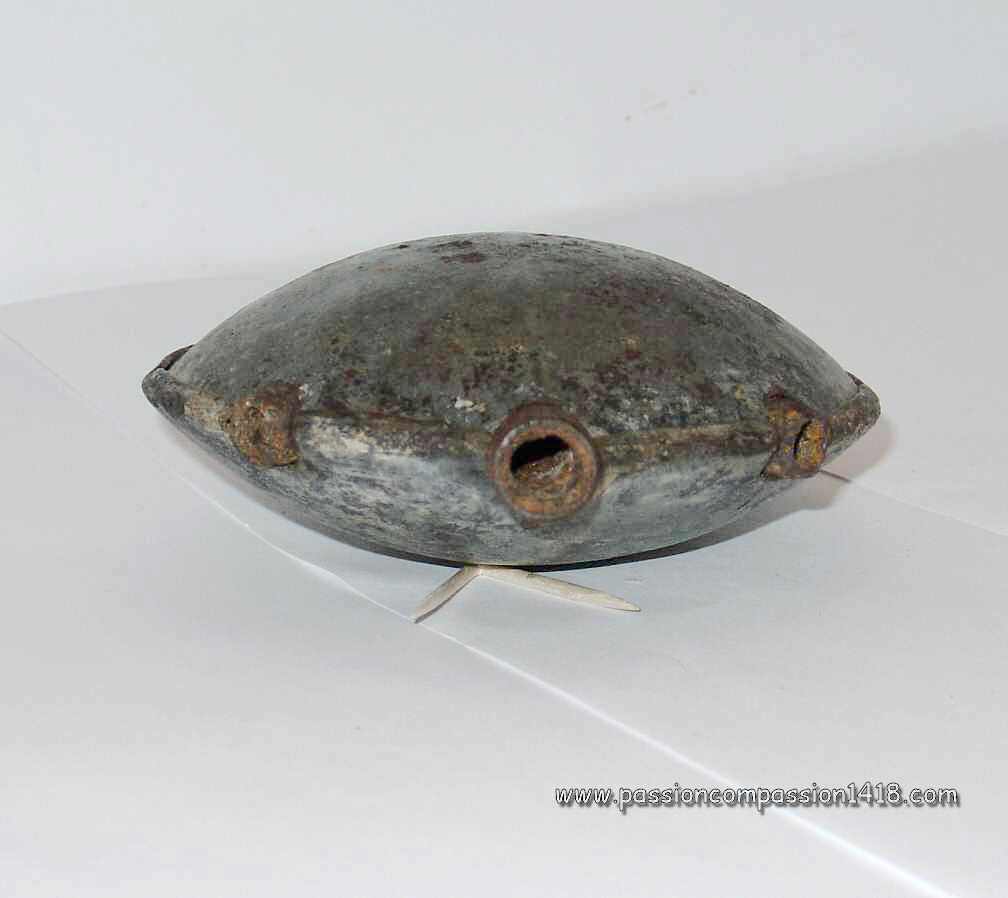 |
|
Offensive turtle grenade. Face view, see the star shaped 6 channels and the assembli fold. |
Offensive turtle. Profile view, detail of the central tube. |
|
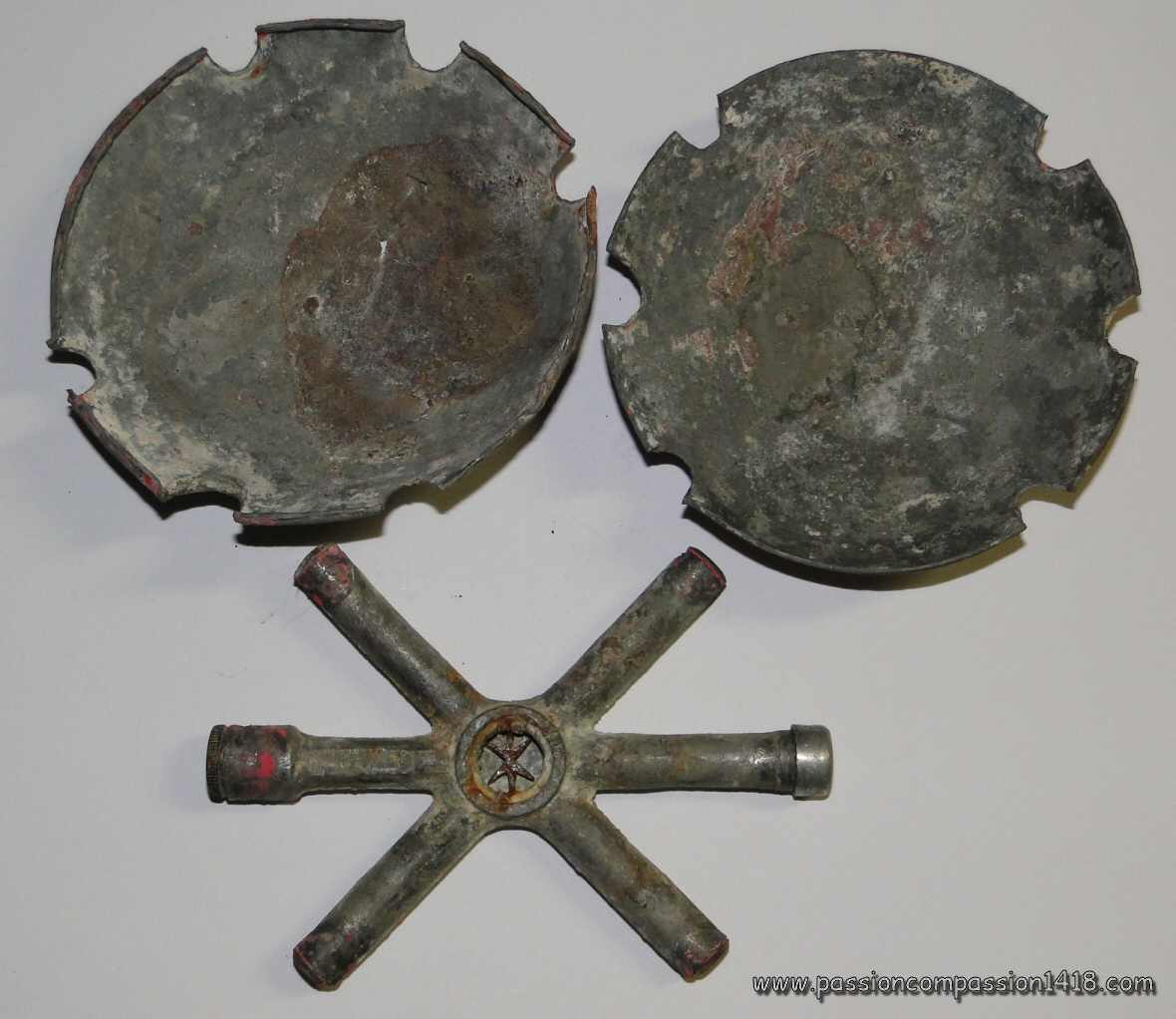 |
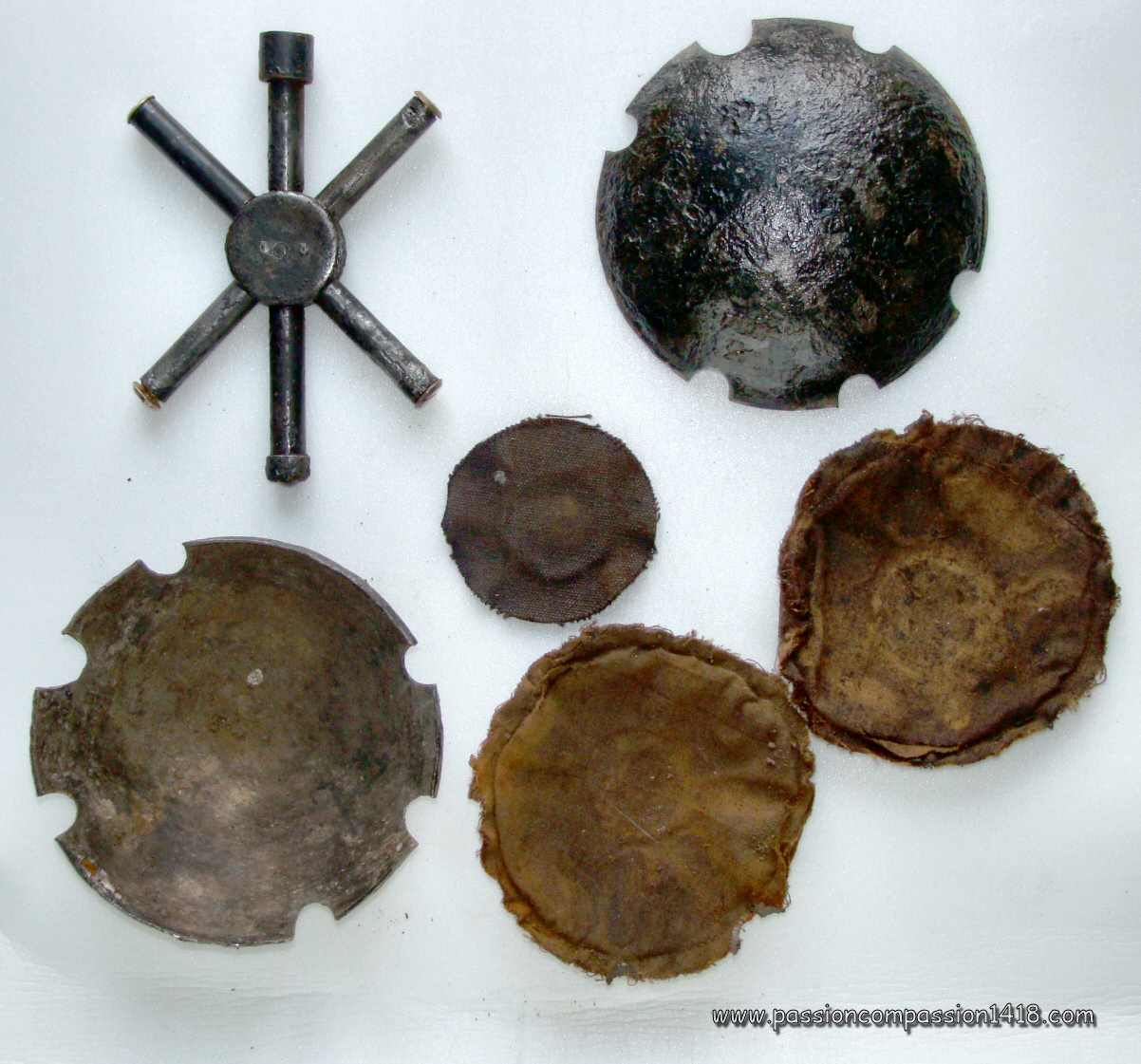 |
|
Opened offensive turtle grenade. View on the 6 branches star tubes and the central percussion pins star. Pictures courtesy Luc Malchair. |
Opened offensive turtle grenade. View on the 6 branches star tubes and bags containing the explosives. |
|
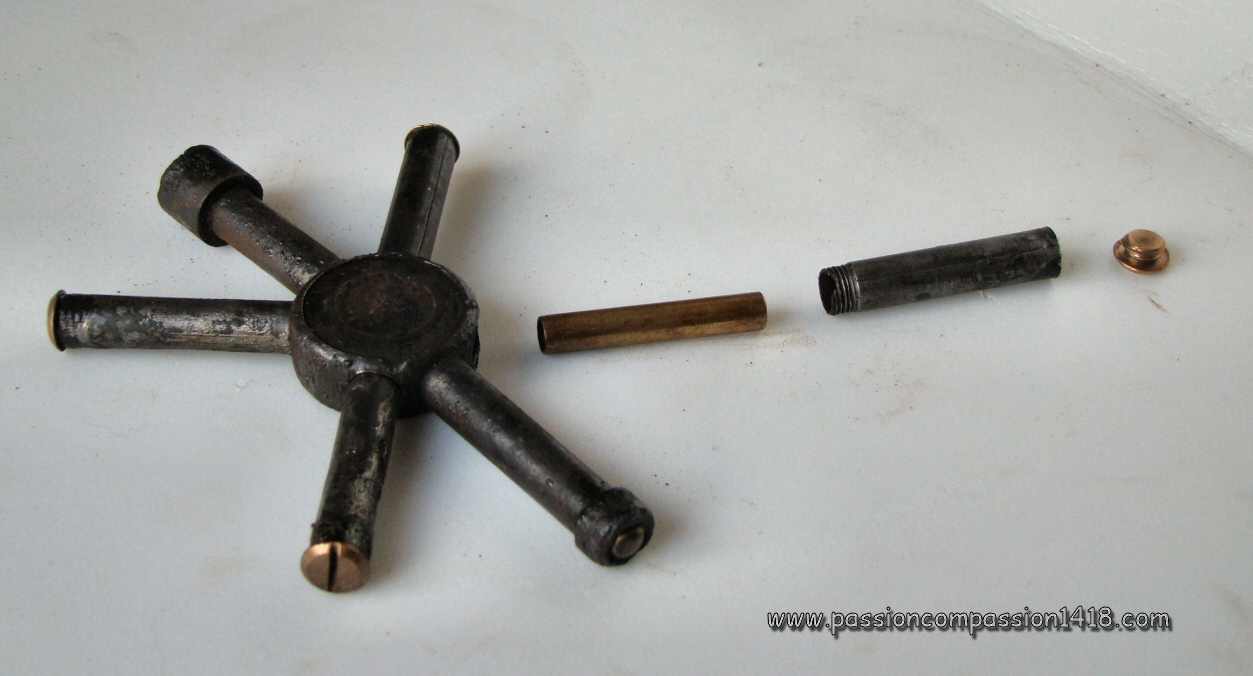 |
||
Offensive turtle grenade - one of the radial tubes is opened, showing the mobile inertia starter-bearer in brass. |
||
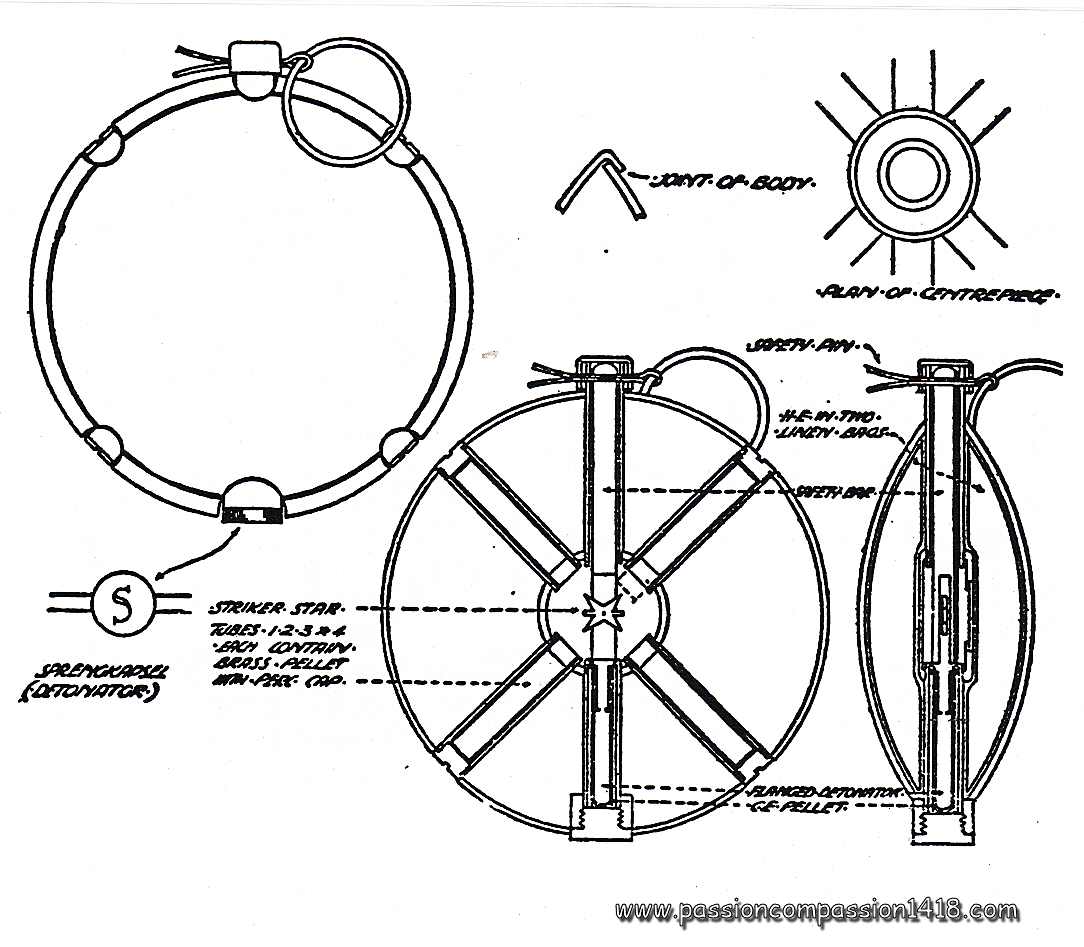 |
||
Offensive turtle grenade - Wartime scheme. |
||
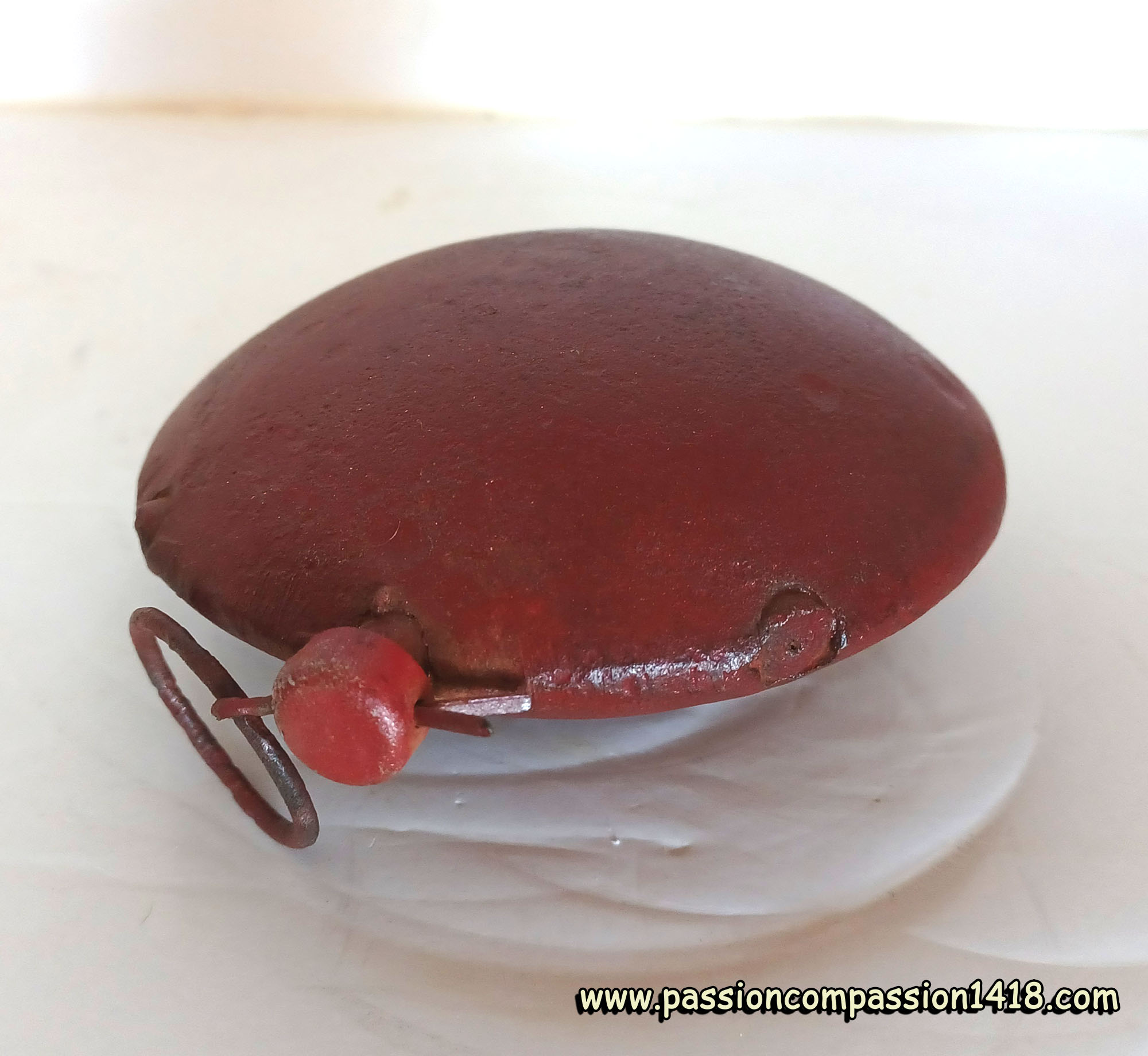 |
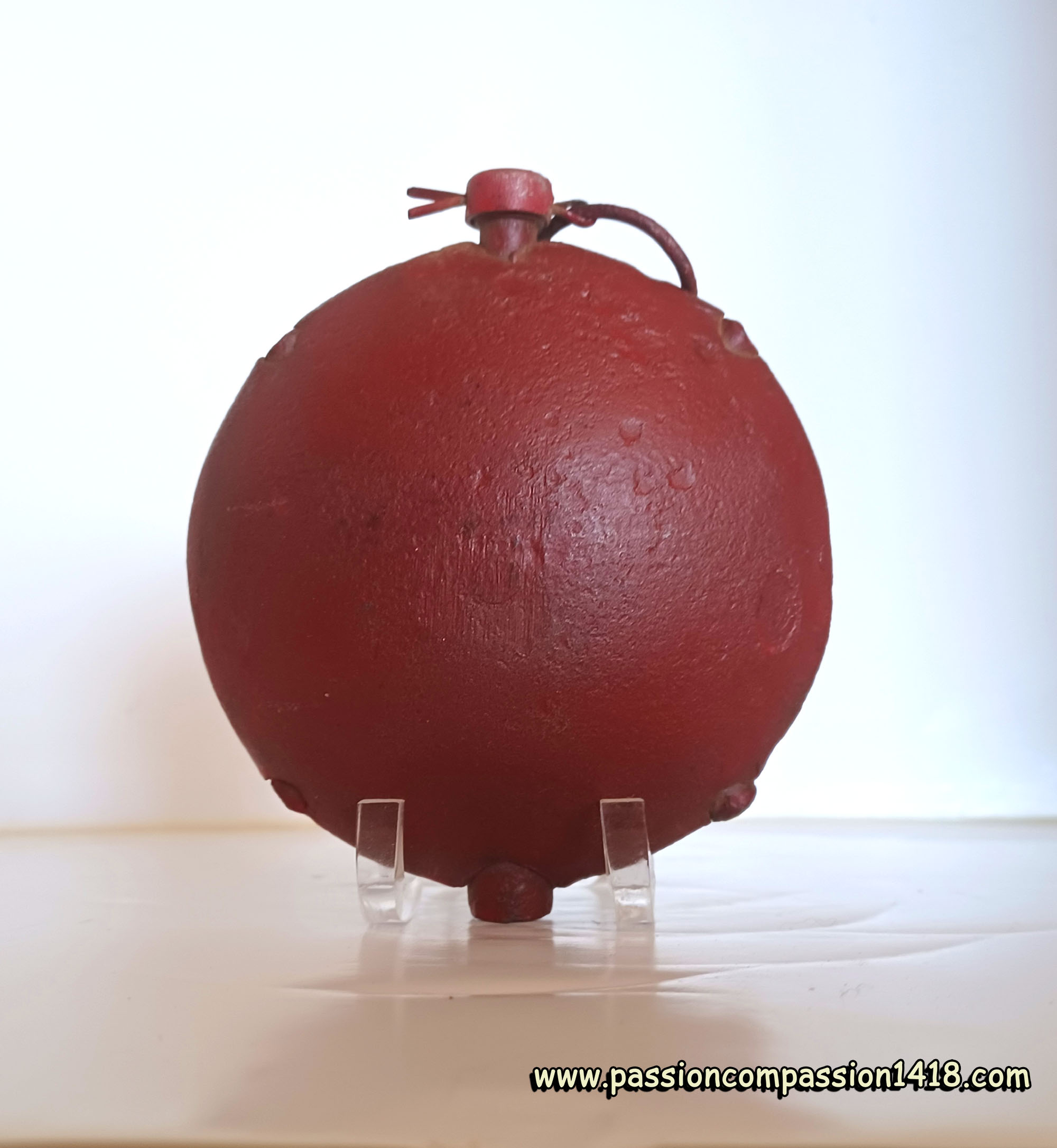 |
|
Exercice offensive turtle grenade. Pictures courtesy Charles Gable. |
Exercice offensive turtle grenade. Pictures courtesy Charles Gable. |
|
Return at the top of the page |
||
Diskushandgranate defensive M 1915 |
||
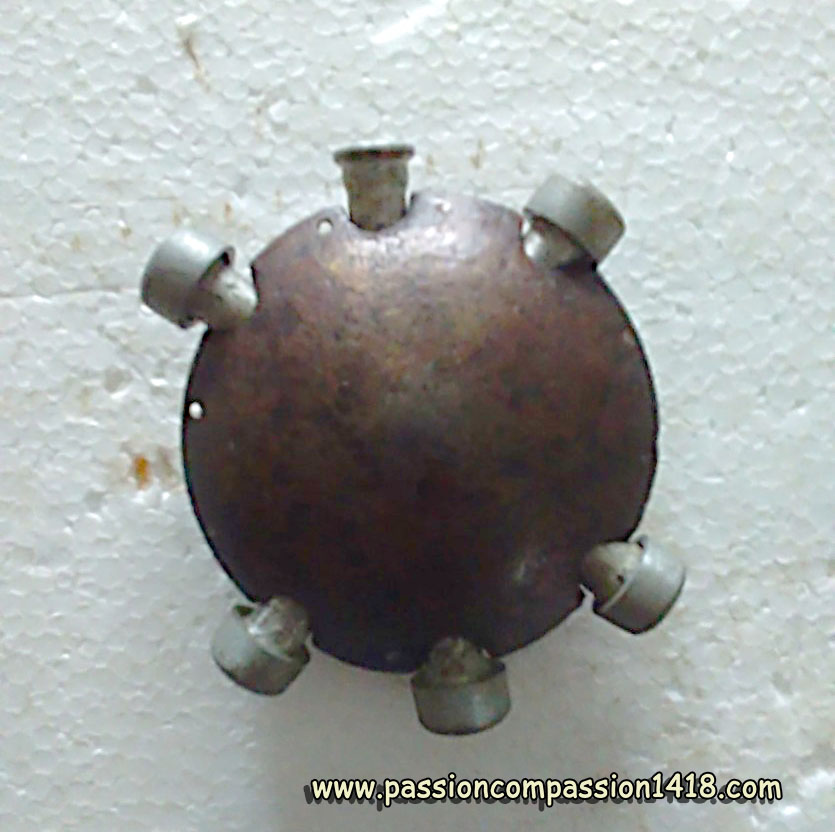 |
The 'Diskushandgranaten' existed in two versions :
The turtle grenades of both models were also used as booby trap, posed in equilibrum and safety pin removed. Both models wer suffering of too high a sensitivity to humidity. Weight 360 g, including 20 g explosive. |
|
Defensive turtle grenade. |
||
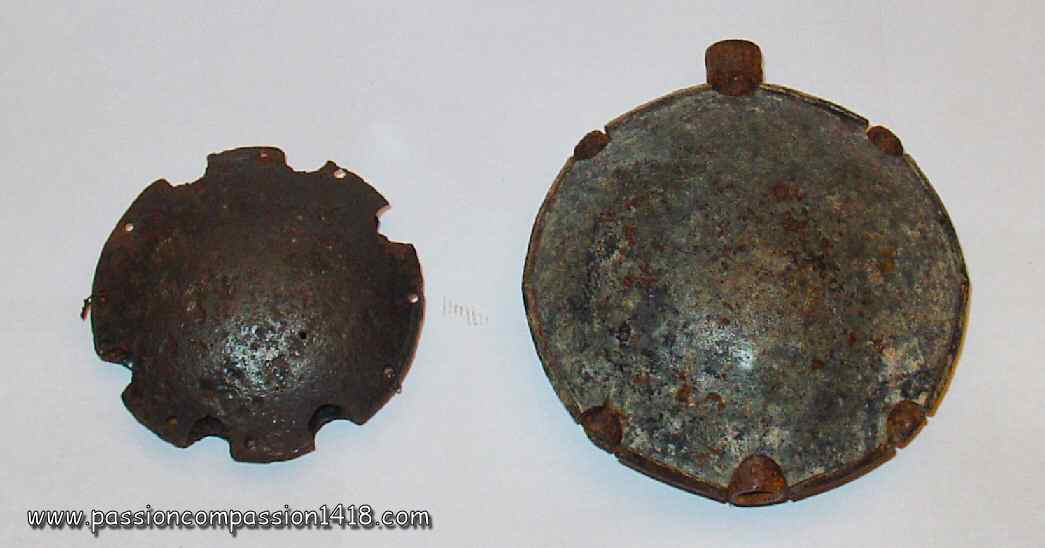 |
||
Defensive (left) and offensive (right) turtle grenades. See the size difference. |
||
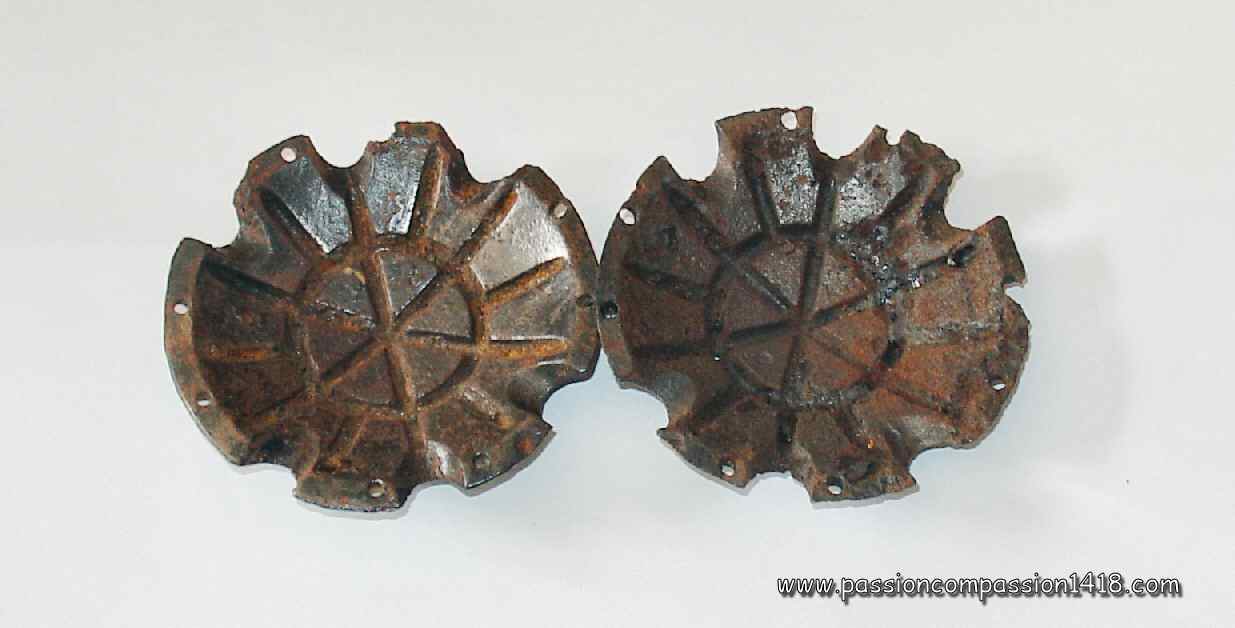 |
||
Opened defensive turtle grenade. Nice look on the inner prefragmentation grooves. |
||
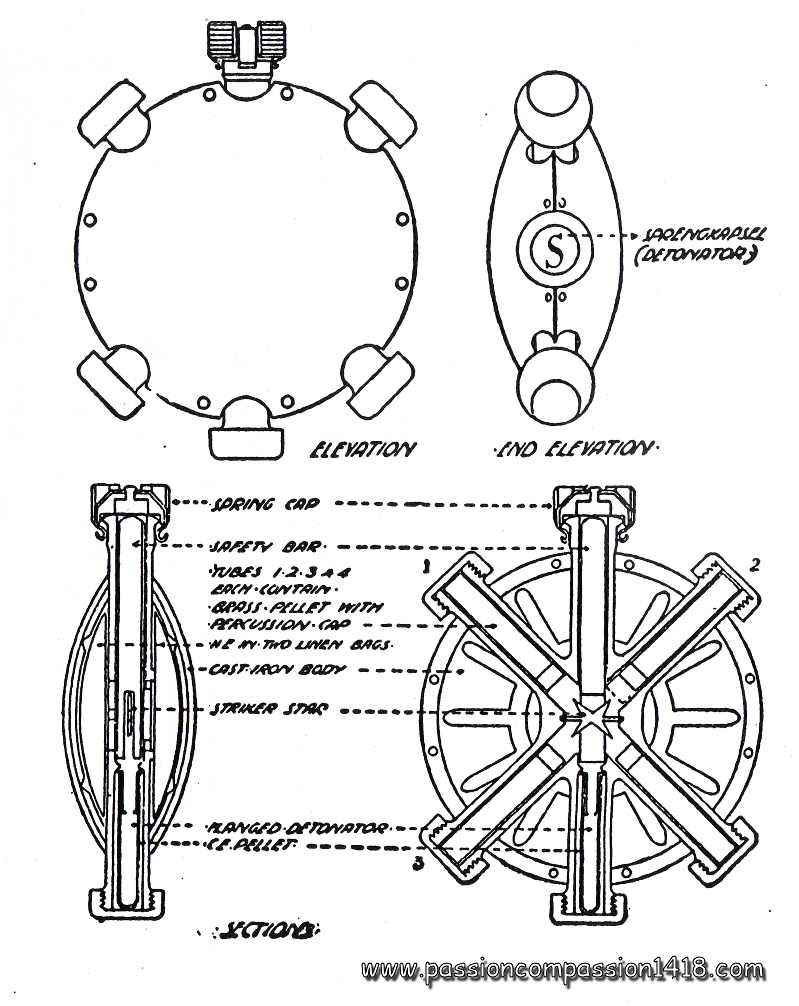 |
||
Defensive turtle grenade - wartime scheme. |
||
Return at the top of page |
||
Stielhandgranaten 1915 |
||
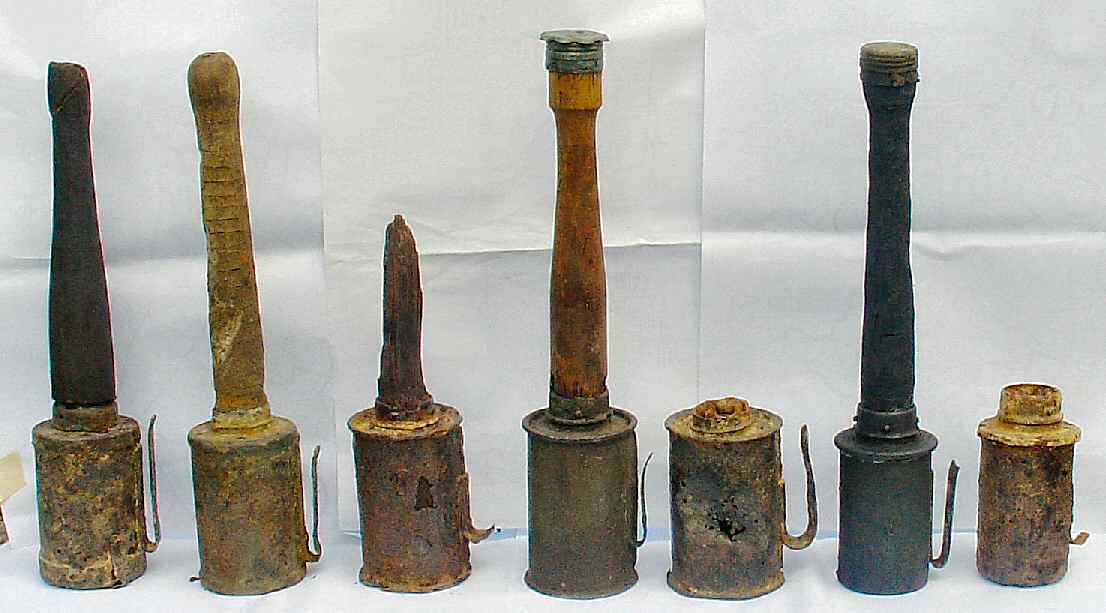 |
From the very start of the static war, all the fighting armies realized the utility of grenades in close combat. German and French soldiers improvise 'hair brush' grenades, hasty build of a small wooden plank with a stick, together with an explosive load surrounded with metal pieces, and a wick and detonator ignition system. |
|
A family picture of stick hand grenades from 1915 to 1917. |
||
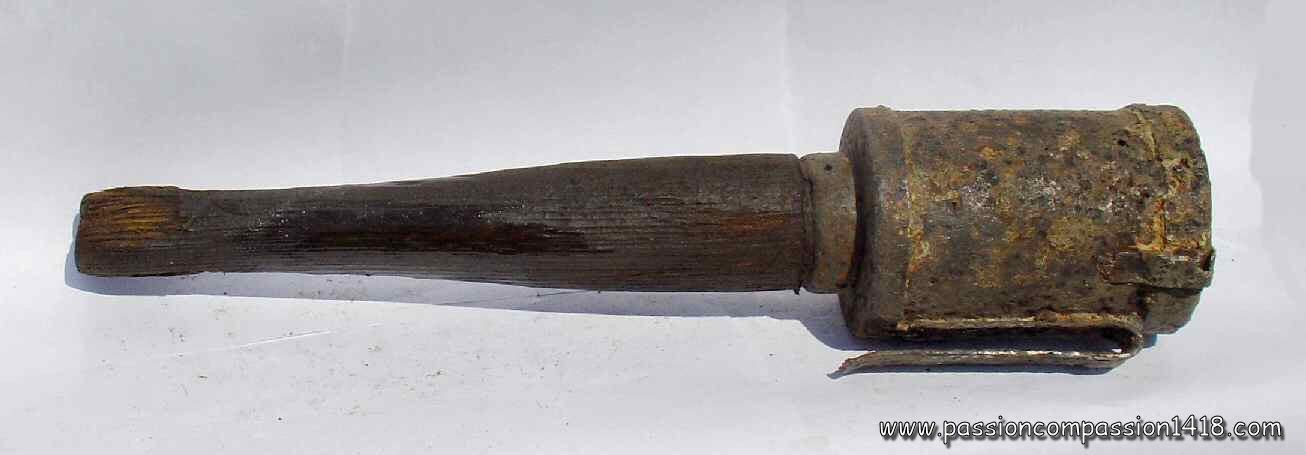 |
||
Stick hand grenade model 1915, recognizable with its thick wooden stick, no stick cap, and its crimpled steel cylinder with mounting tabs |
||
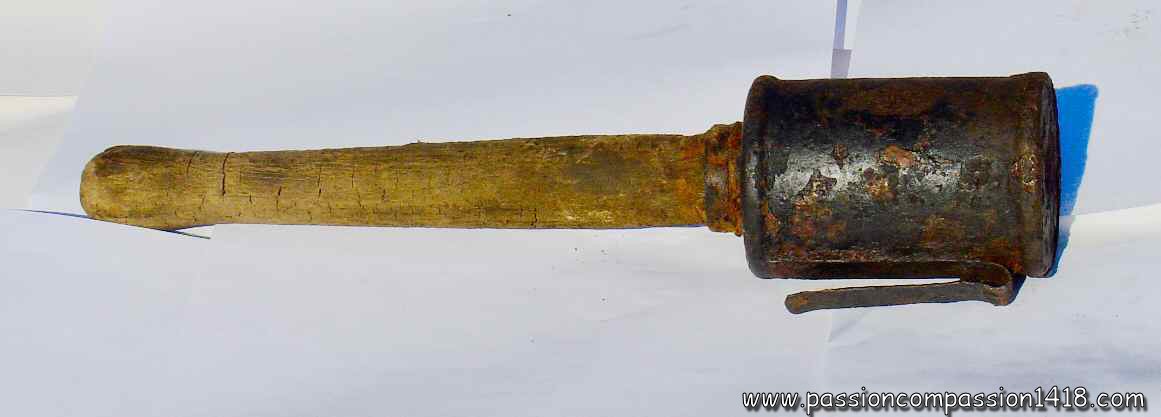 |
||
Stick hand grenade model 1915 in better condition, crimped box |
||
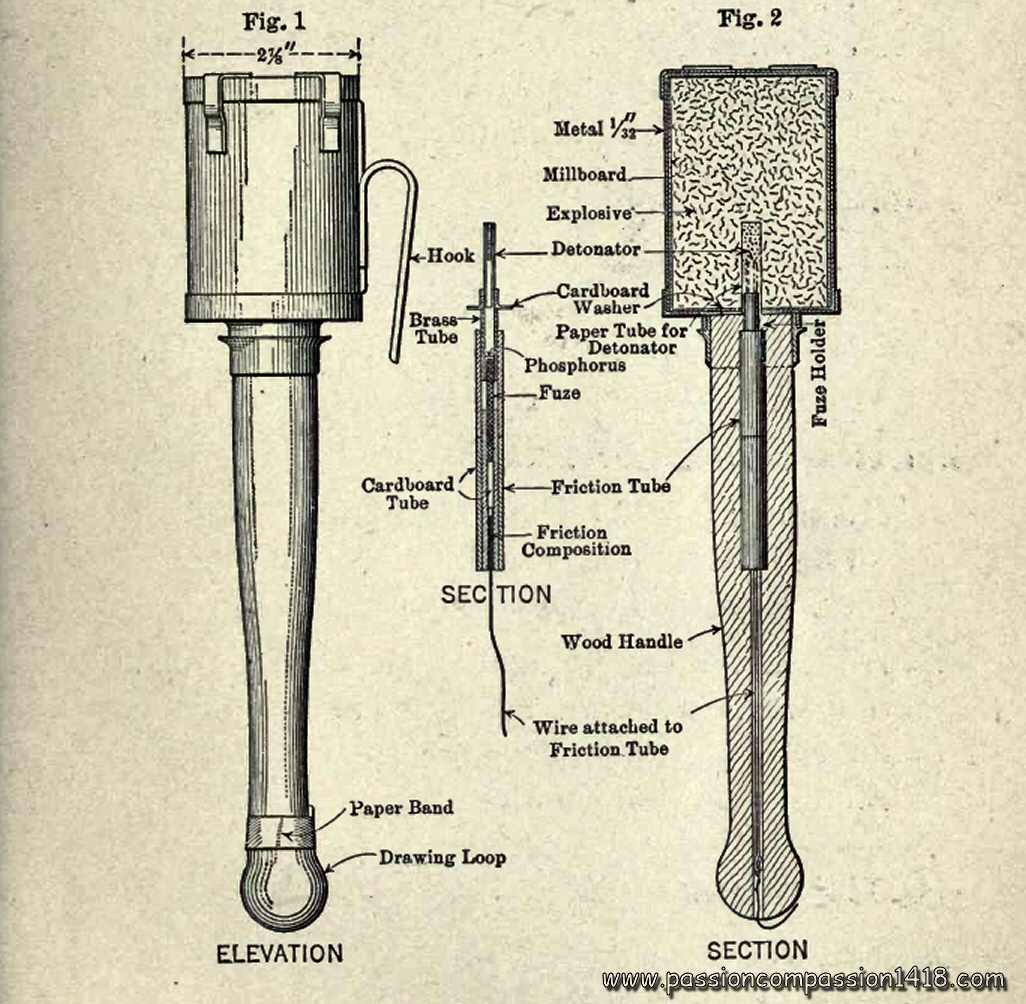 |
||
Stick hand grenade model 1915 - Wartime scheme from a US manual |
||
Return at the top of page |
||
Stielhandgranate 1915 percutante |
||
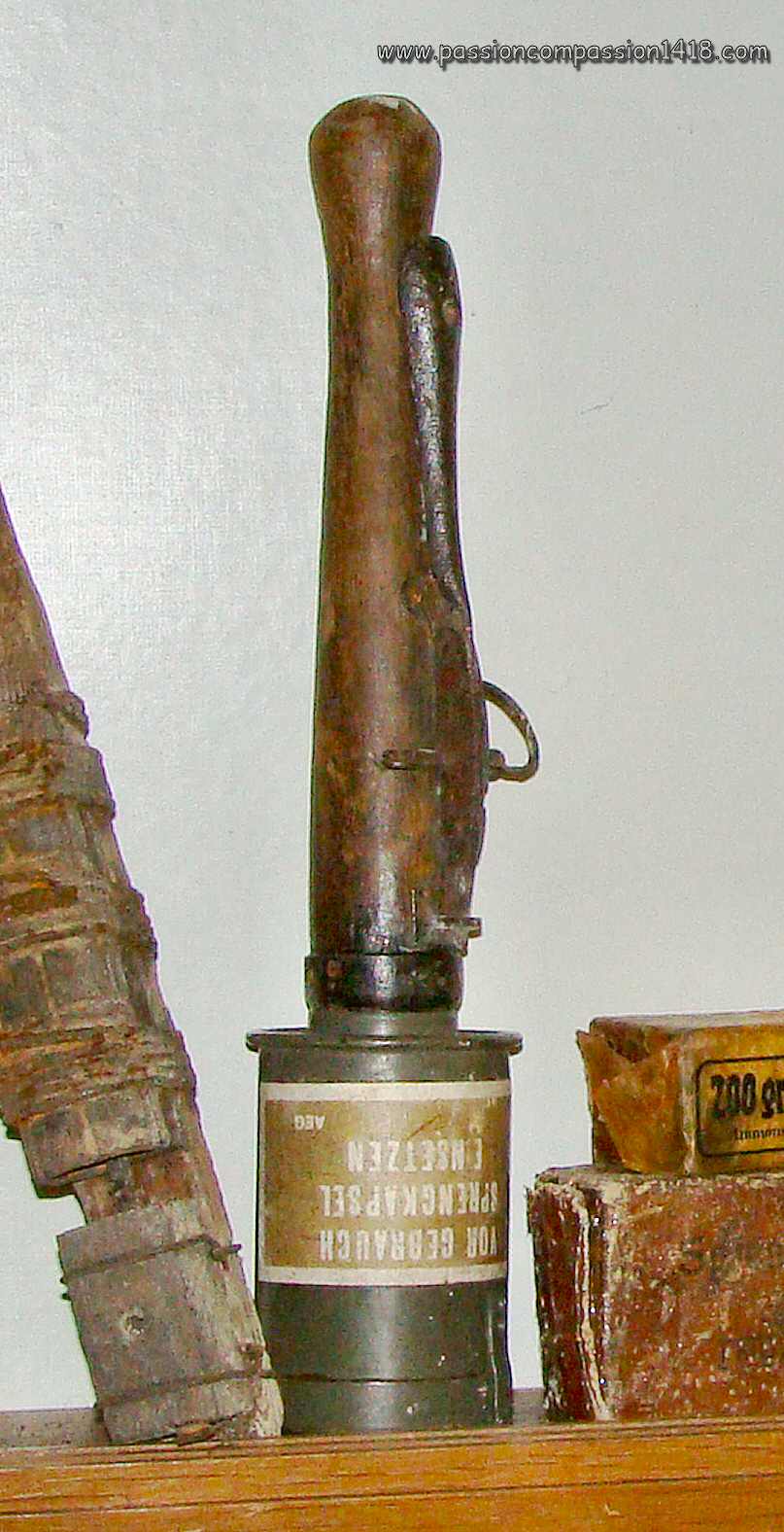 |
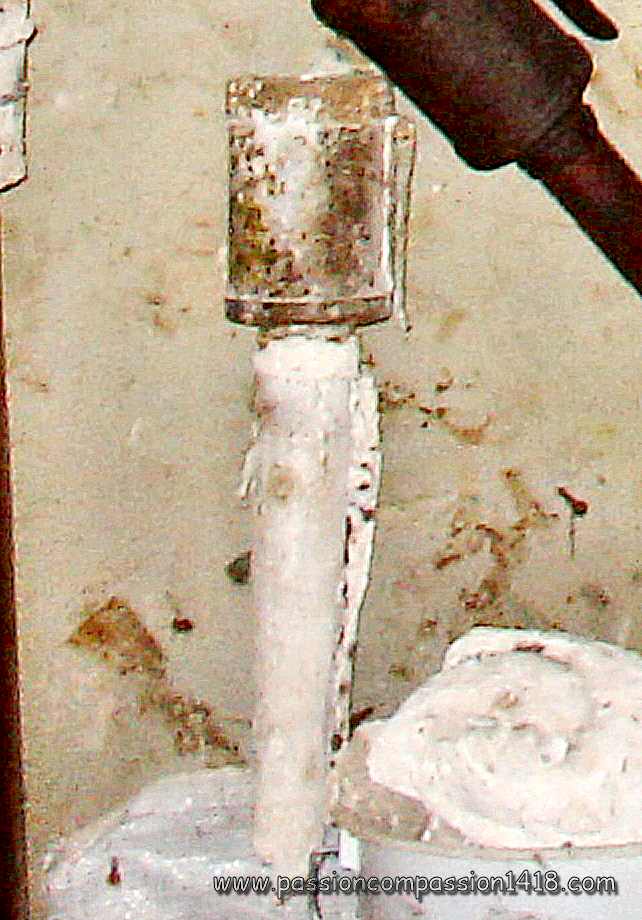 |
More and more complex variations were designed on the basis of the simple initial model. At the end of 1915, two percussion stick hand grenades were developped, based on the fact that stick grenades trend to land vertically on their head :
|
Percussion stick hand grenade M 1915 with spoon - Lorraine museum |
Percussion stick hand grenade M 1915 with spoon - private museum in Champagne |
|
 |
||
Percussion stick hand grenade M 1915 with spoon - dismounted handle |
||
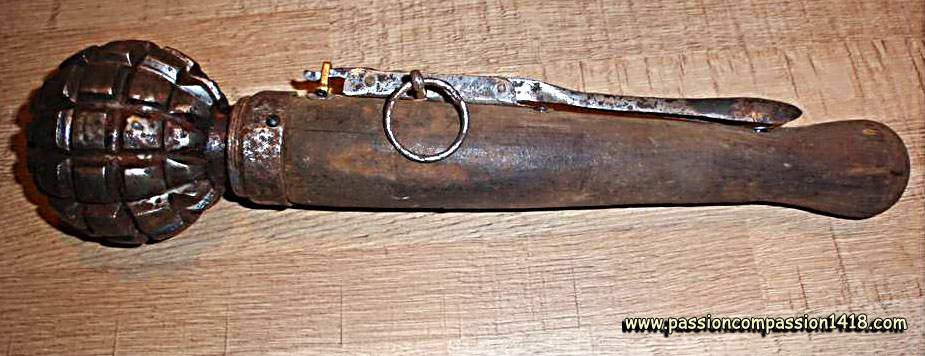 |
||
Percussion stick hand grenade M 1915 with spoon - Variant using a Kugel HandGranate body |
||
Return at the top of page |
||
Stielhandgranate 1916 |
||
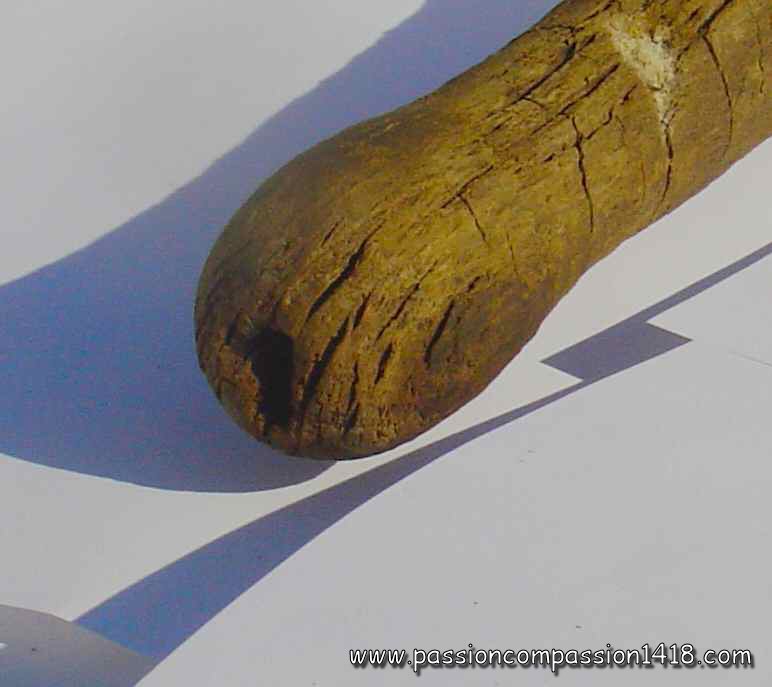 |
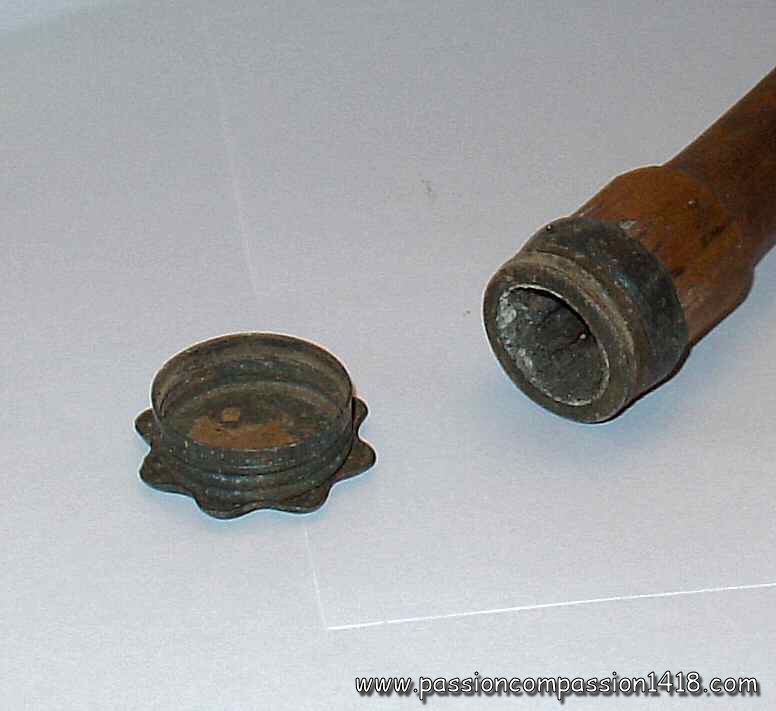 |
In 1916 the number of stick grenades variations is increasing, with the apparition in small series of :
At the end of 1916, the powerful tolite starts to replace the ammonium nitrate as a grenade explosive, allowing to make the crimped box smaller or filling the unused space with a wooden block. |
Stick hand grenade model 1915 - detail of the stick base : the unprotected string opening was a weak point for waterproofing properties |
Stick hand grenade model 1916 - detail of the stick base : the stick cap (here equipped with additional star plate and unscrewed) is protecting the string hole from humidity. |
|
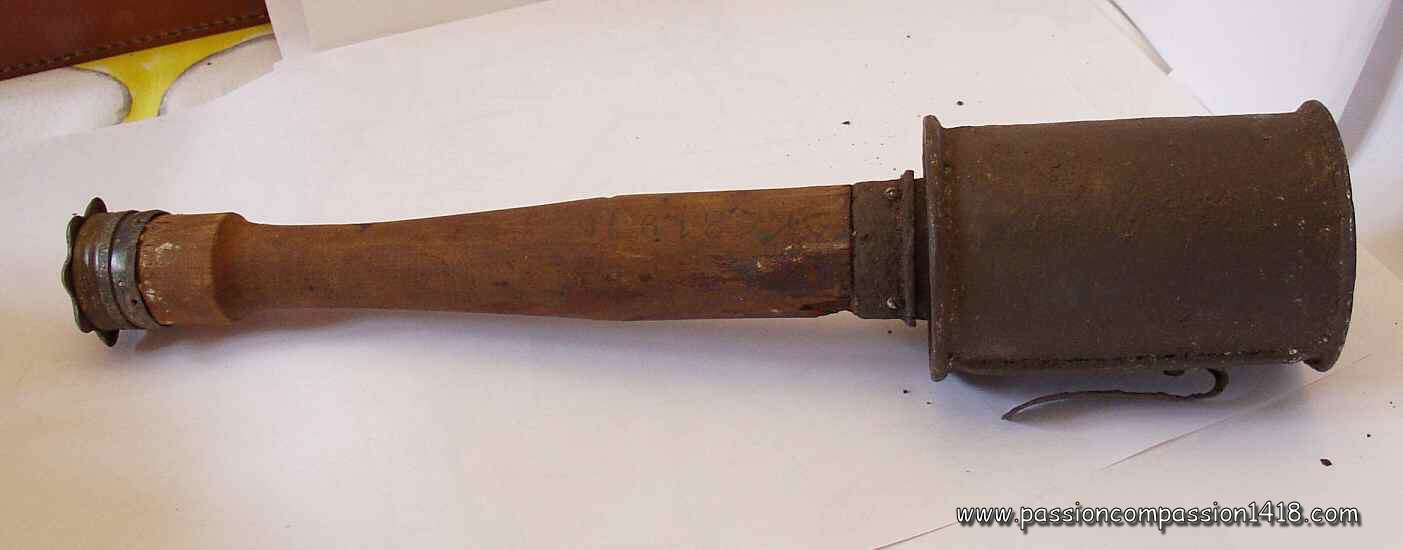 |
||
Stick hand grenade model 1916 |
||
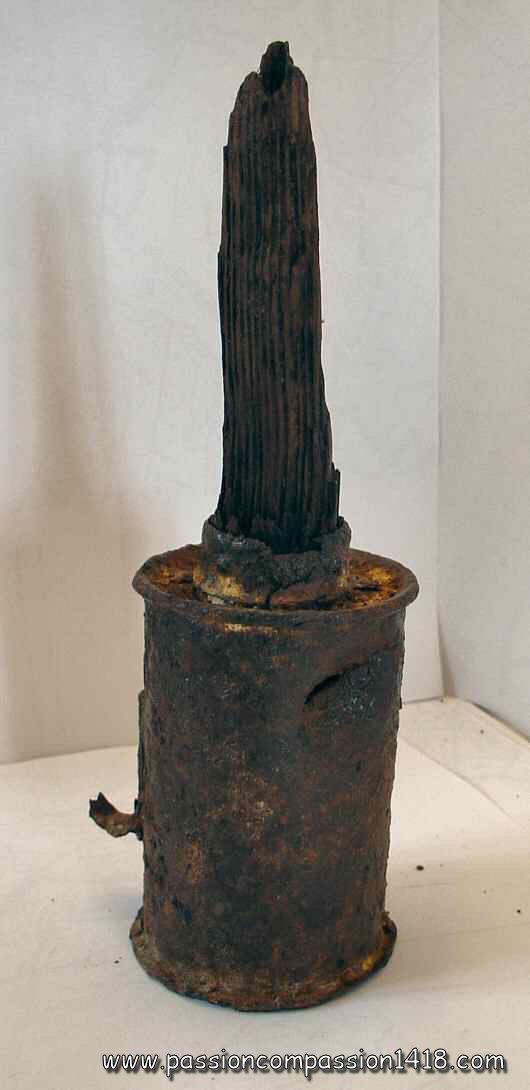 |
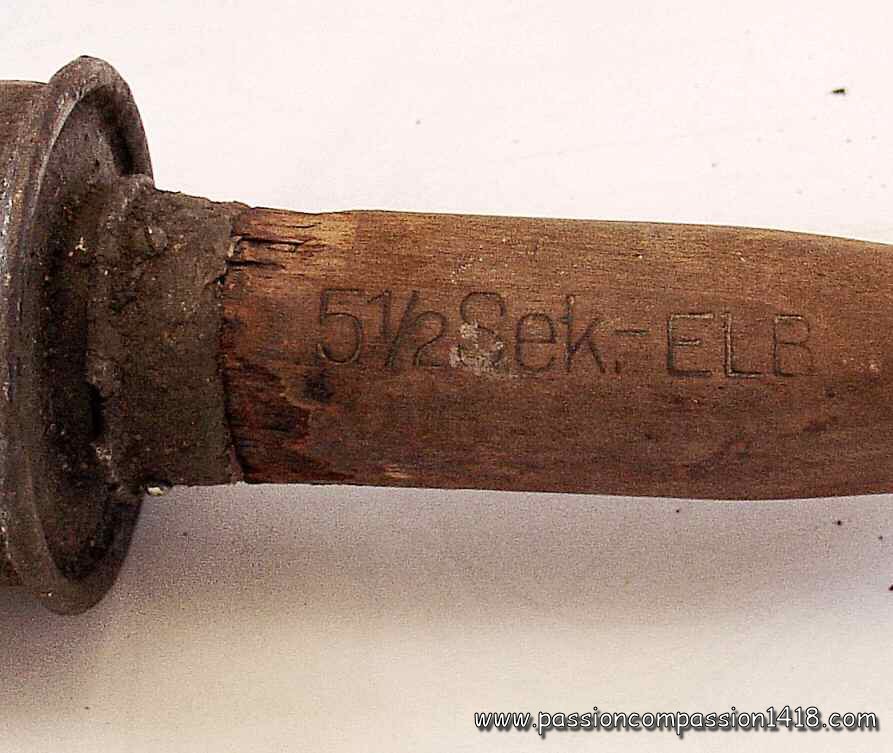 |
|
Stick hand grenade model 1916 - detail of the delay writings on the stick (5.5 sec) |
||
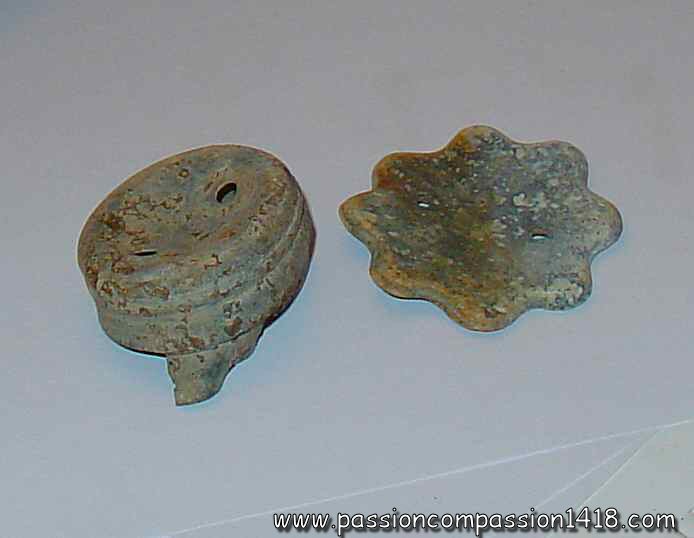 |
||
Stick hand grenade model 1916 with a remnant of its wooden stic as observed in Verdun - Mort Homme |
Pieces of stick caps: the star shaped plate is designed to help the cap unscrewing in muddy conditions (Observed in Verdun - Mort Homme) |
|
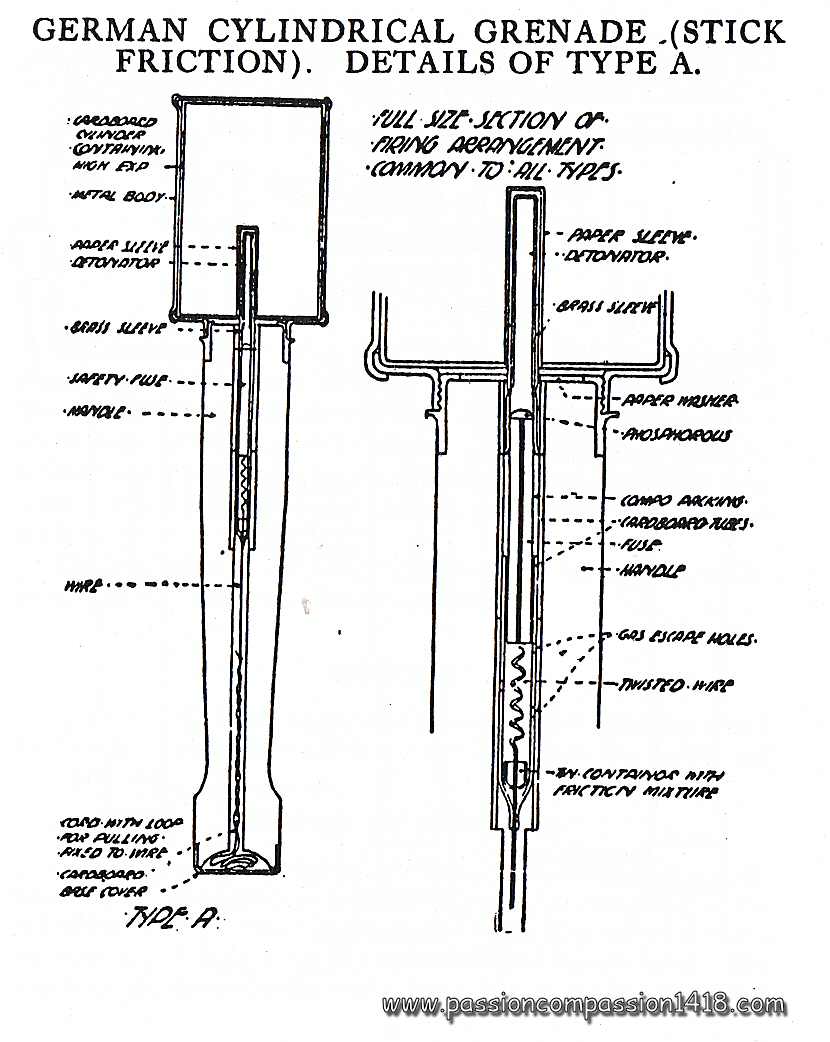 |
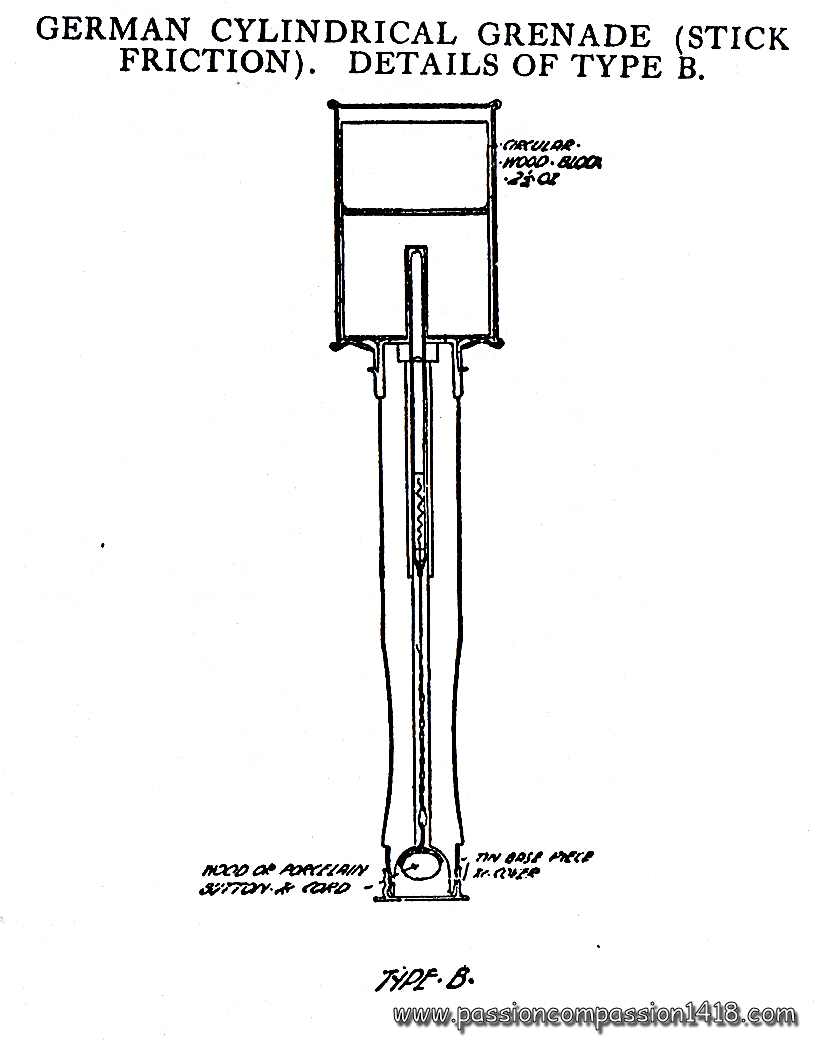 |
|
Stick hand grenade model 1916 - Wartime scheme from a US manual |
Stick hand grenade model 1916 - Variation loaded with tolite explosive, therefore needing less material, excedent space filled with a wooden block - Wartime scheme from a US manual |
|
Return at the top of page |
||
Stielhandgranate 1917 |
||
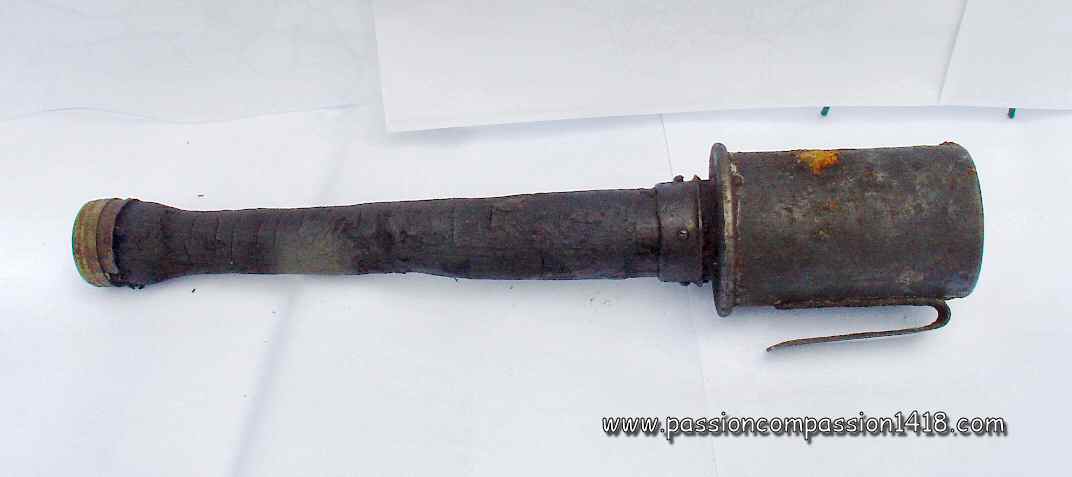 |
From 1916, the ammonium nitrate used as explosive for stick hand grenades models 1915 and 1916 was gradually replaced by the more powerful tolite. As a consequence the grenade box volume could be decreased, and the manufacturing process could evouluate from the usual crimping to thin steel plate stamping in one piece. This modification gave birth to the :
All the Stielhandgranate models were used both as offensive and defensive hand grenades, very deadly and stunning in a short range (15 m). They wer however all affected by the same defect induced by their cumbersome sizes and shape, both for transportation and 'ballistic'. Weight 820 g, including Tolite. |
|
Stick hand grenade model 1917 |
||
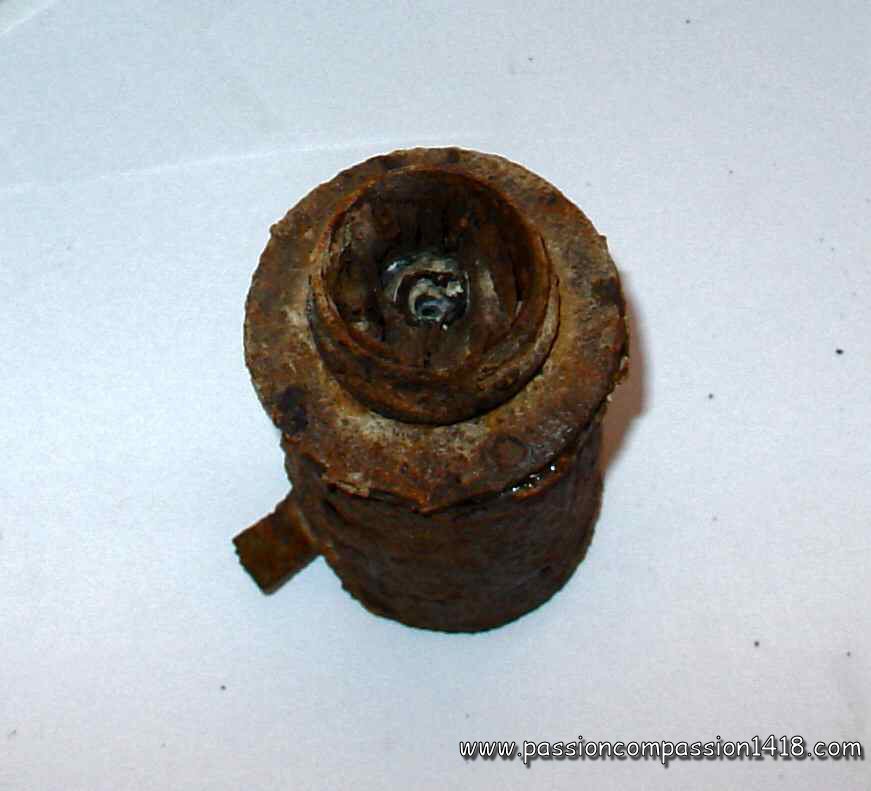 |
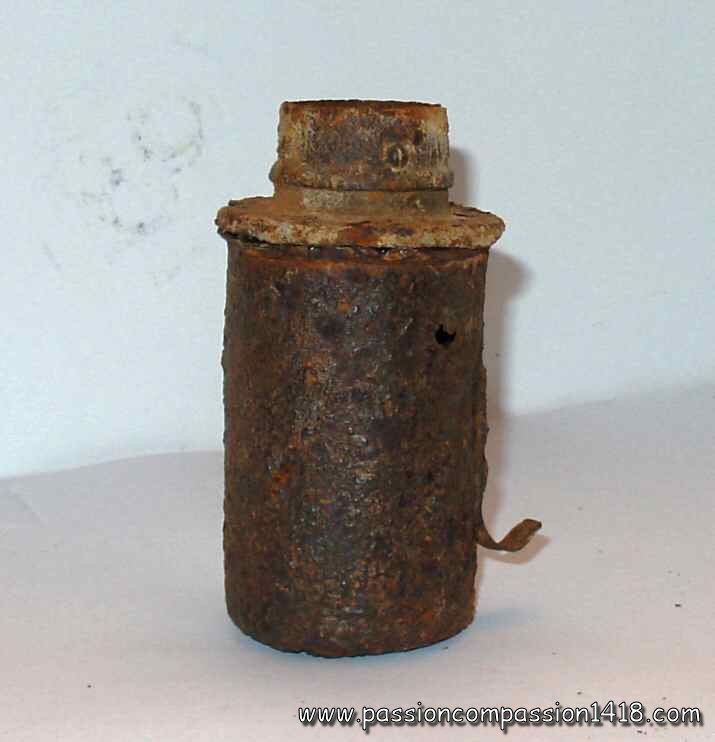 |
|
Stick hand grenade model 1917 - Detail on the detonator housing at the base of the cylinder |
Stick hand grenade model 1917. Stamped box, and remnants of the belt hook. |
|
Return at the top of page |
||
Eierhandgranate M 1917 |
||
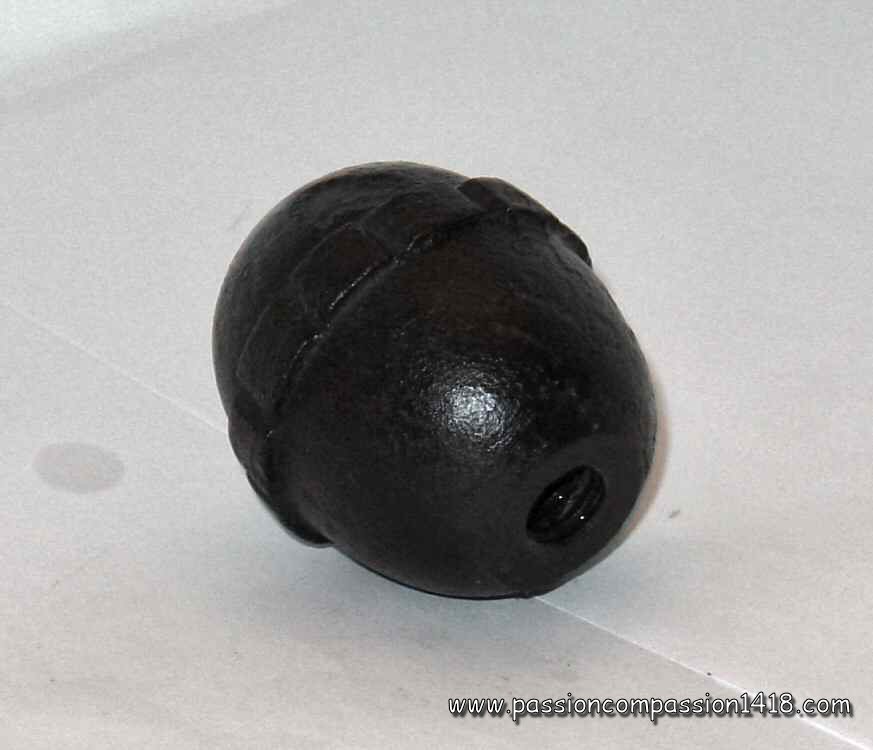 |
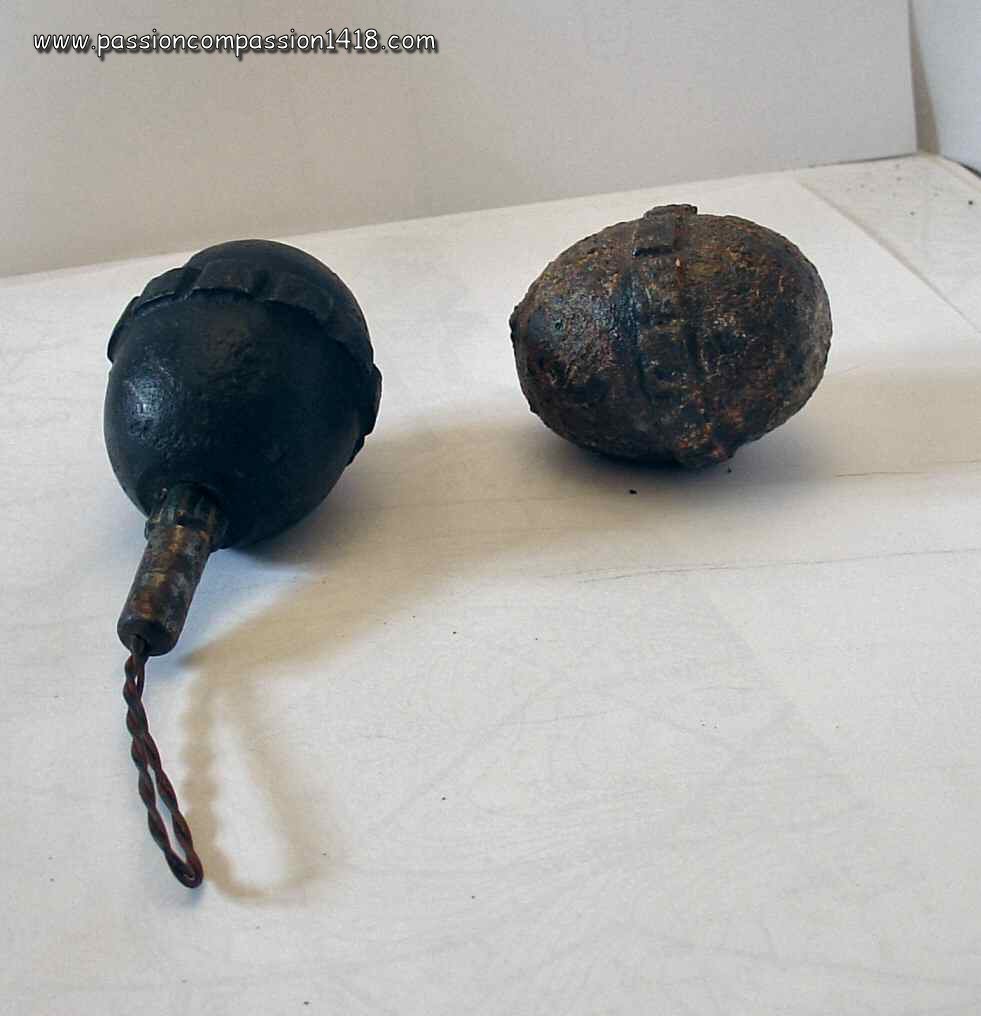 |
The 'egg' grenade ('Eierhandgranate') appeared in the beginning of 1917, as a complement to the othe reglementary grenades that were either too heavy (Kugelhandgranate) or too cumersome (Stielhandgranate) for the assault sections. The small size steel cast body (6 cm long, 4.6 cm diameter), took the shape of an egg, therefore giving this grenade its nickname.
|
'Egg' grenade n/A, view on the ignition plug threaded hole |
'Egg' grenades (The right one has been observed in en Champagne) |
|
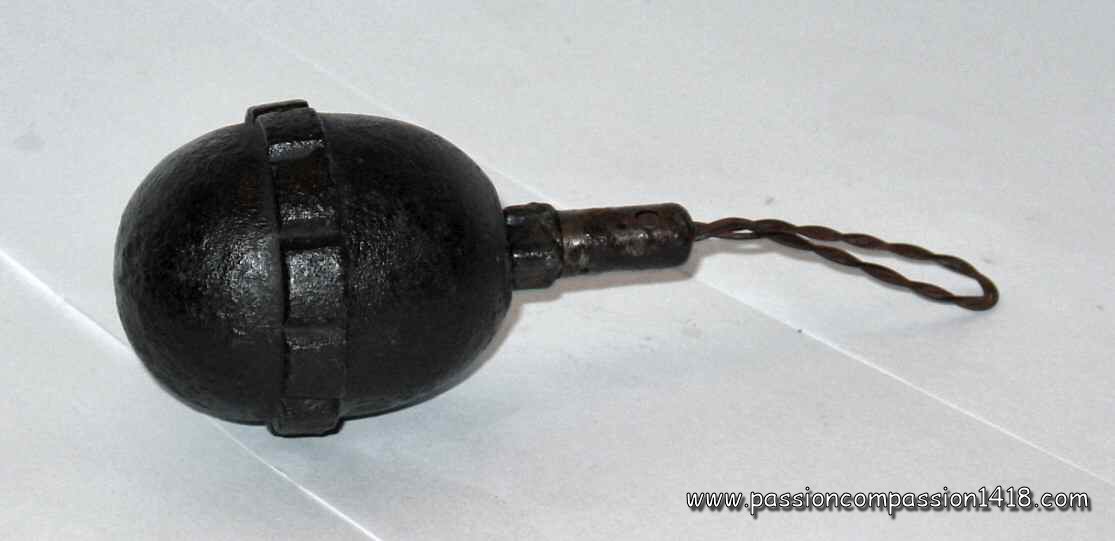 |
||
'Egg' grenade with igniter and launching string' |
||
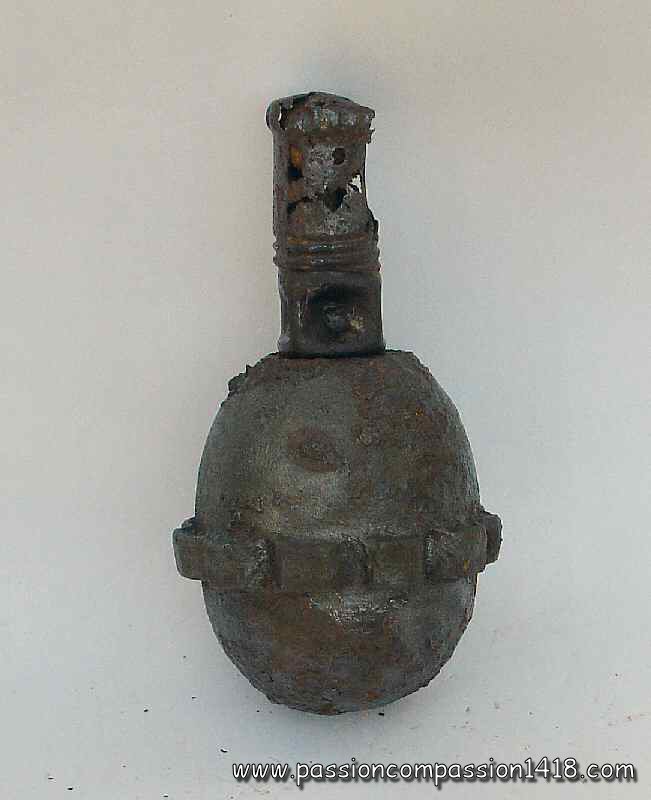 |
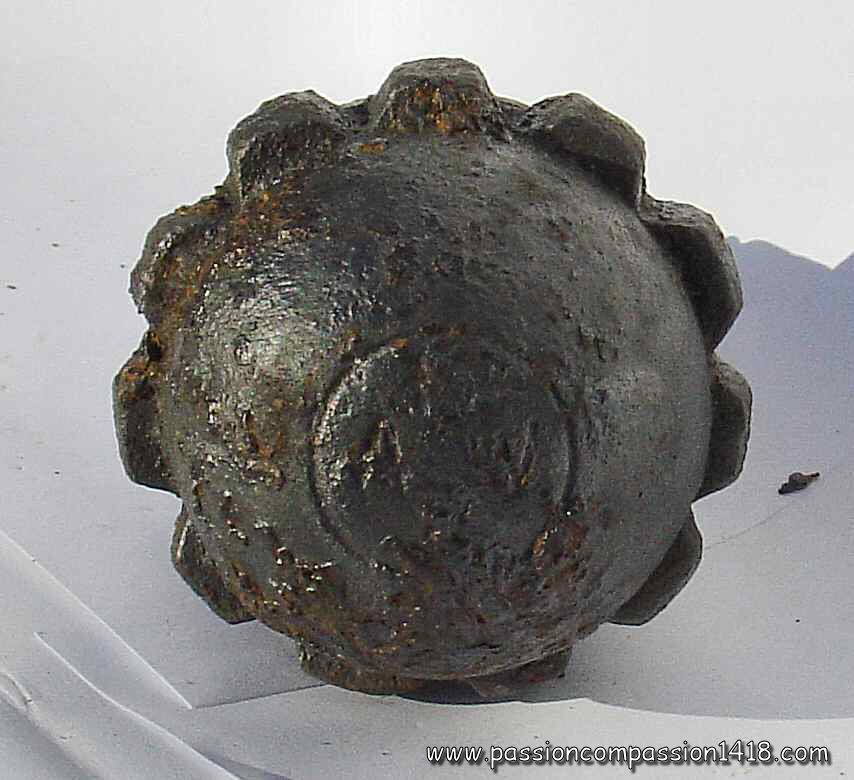 |
|
'Egg' grenade n/A, with stamped plate traction igniter M 1917, 5 seconds delay |
'Egg' grenade n/A, detail on the body bottom markings 'A W' |
|
 |
||
'Egg' grenades n/A, with stamped plate traction igniter M 1917. This dismantled piece shows the small sphere that was contained in it |
||
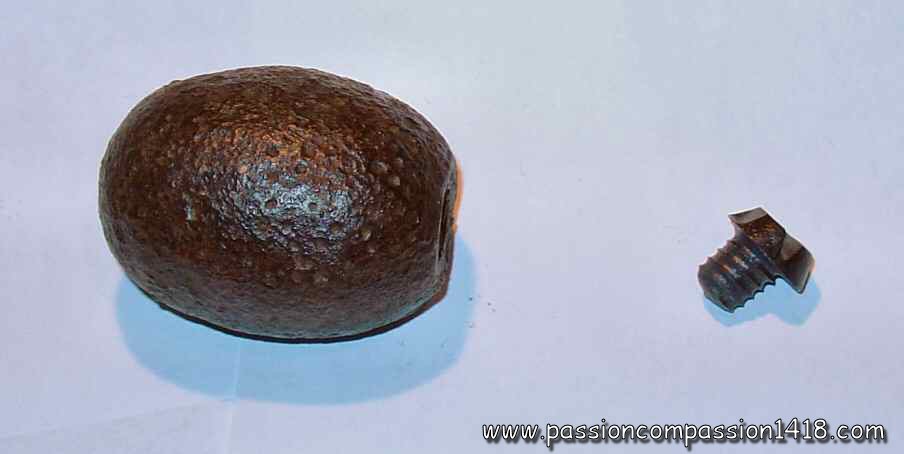 |
||
'Egg' grenade first model (smooth body) aquipped with a transportation plug |
||
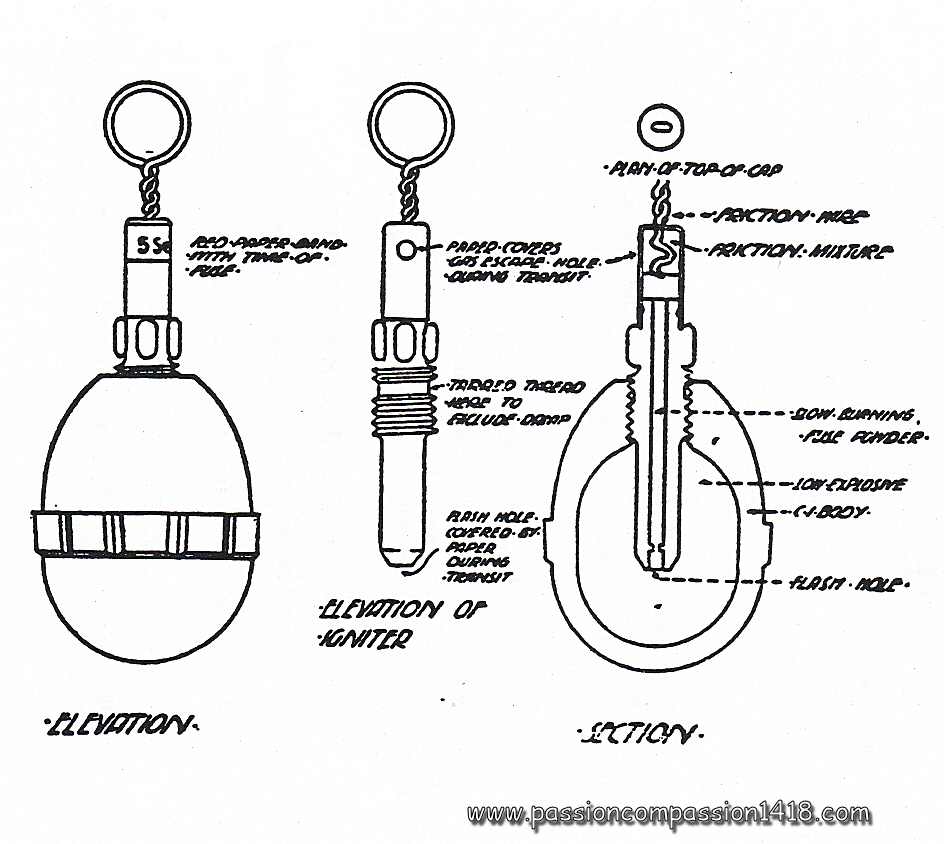 |
||
'Egg' first model - wartime scheme |
||
Return at the top of the page |
||
Karabingranate M 1913 |
||
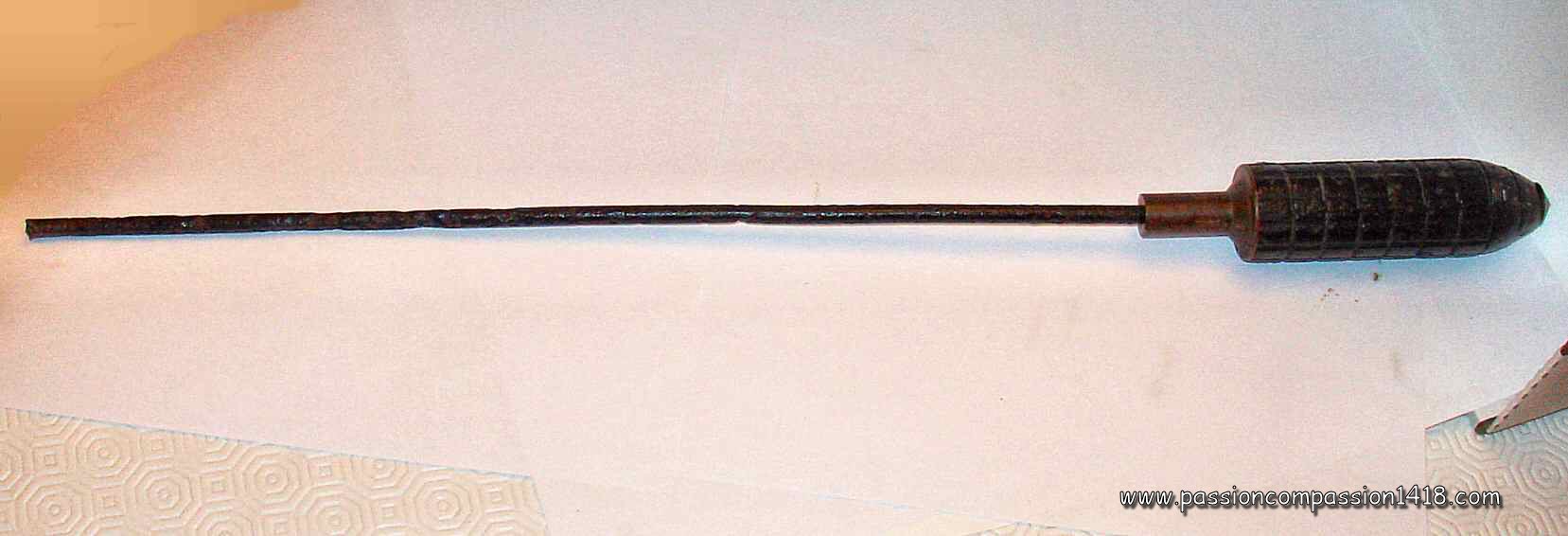 |
The rifle grenade M 1913 is the first of a series of grenades developed by German intended to be lauched using the simple Mauser infantry rifled armed with a blank ammunition, after inserting the long steel rod into the gun. |
|
Rifle rod grenade M 1913 |
||
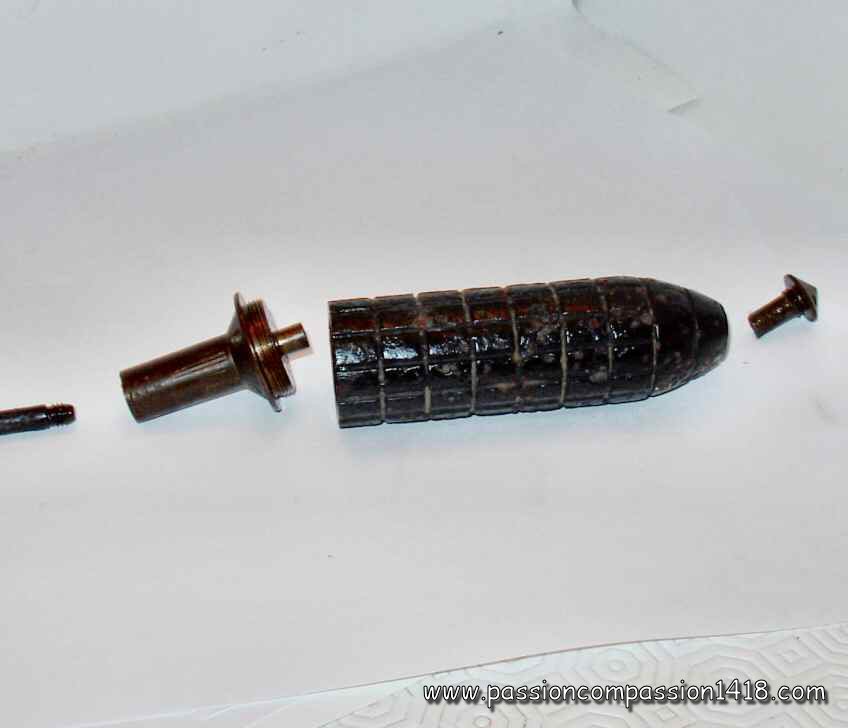 |
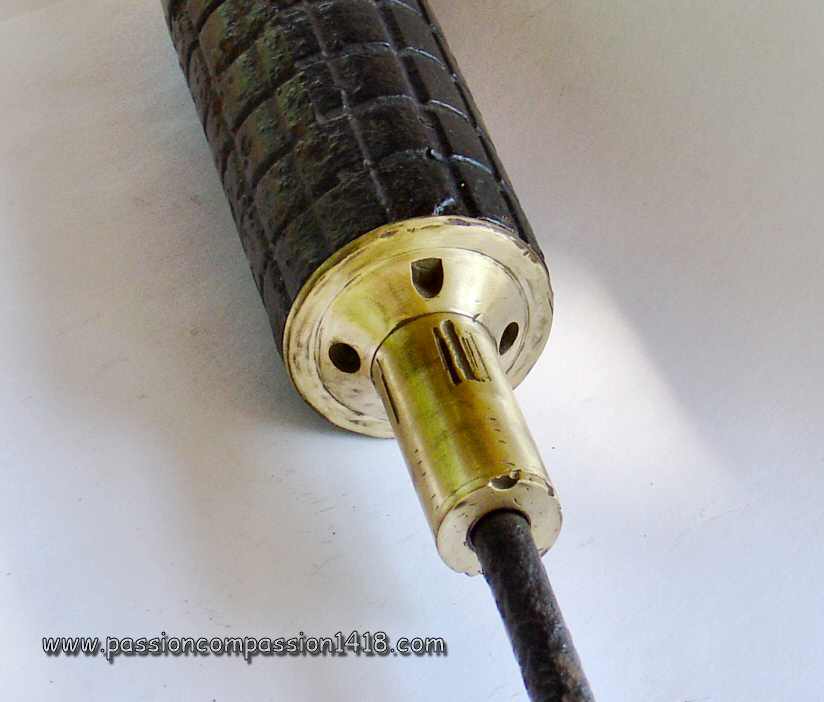 |
|
Rifle rod grenade M 1913, dismantled |
Rifle rod grenade M 1913 - base detail with smoke escape holes |
|
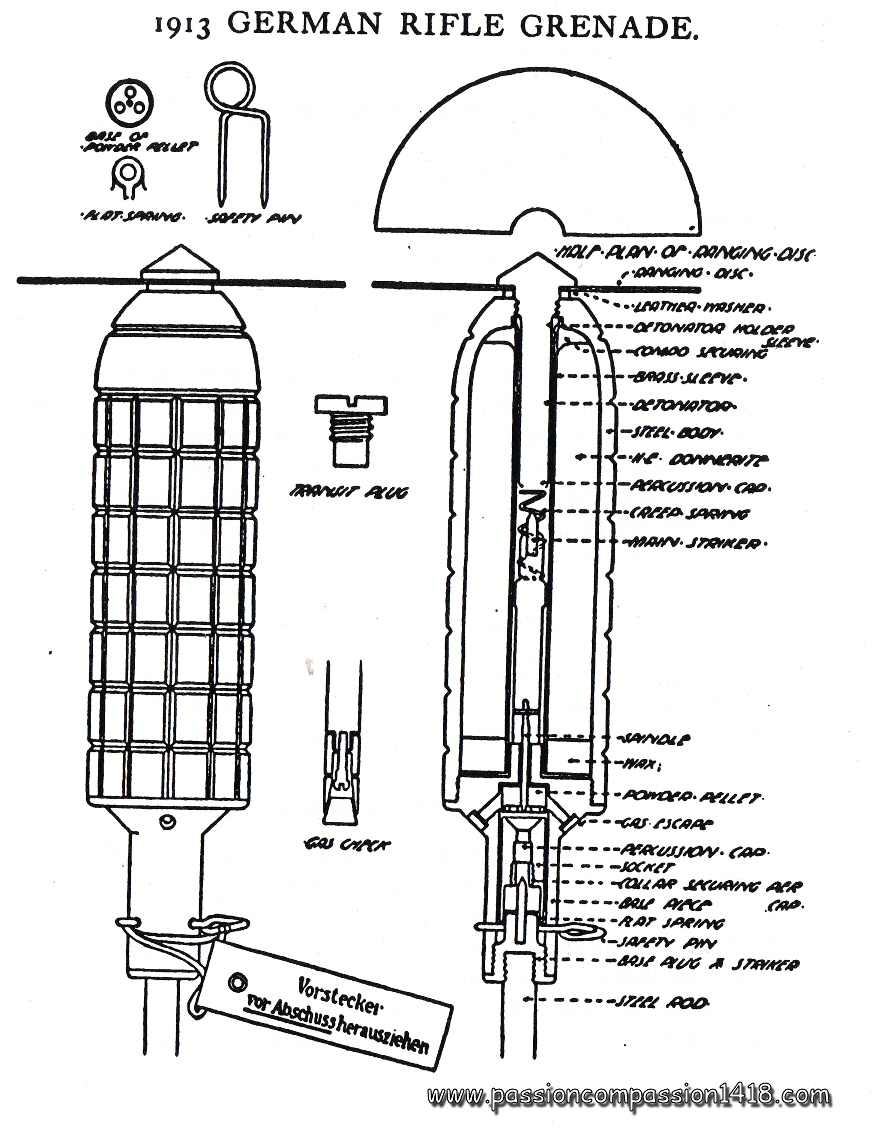 |
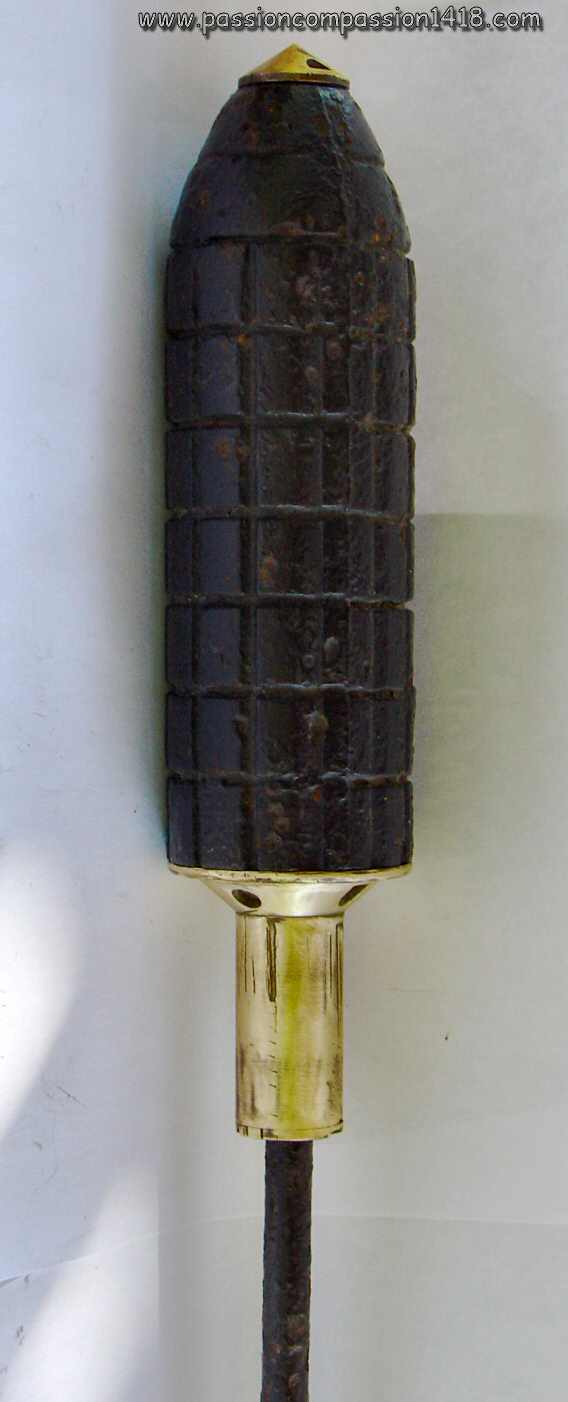 |
|
Rifle rod grenade M 1913 - wartime scheme |
Rifle rod grenade M 1913. This nice aerodynamic shape was more an issue than a quality |
|
Return at the top of the page |
||
Karabingranate M 1914 |
||
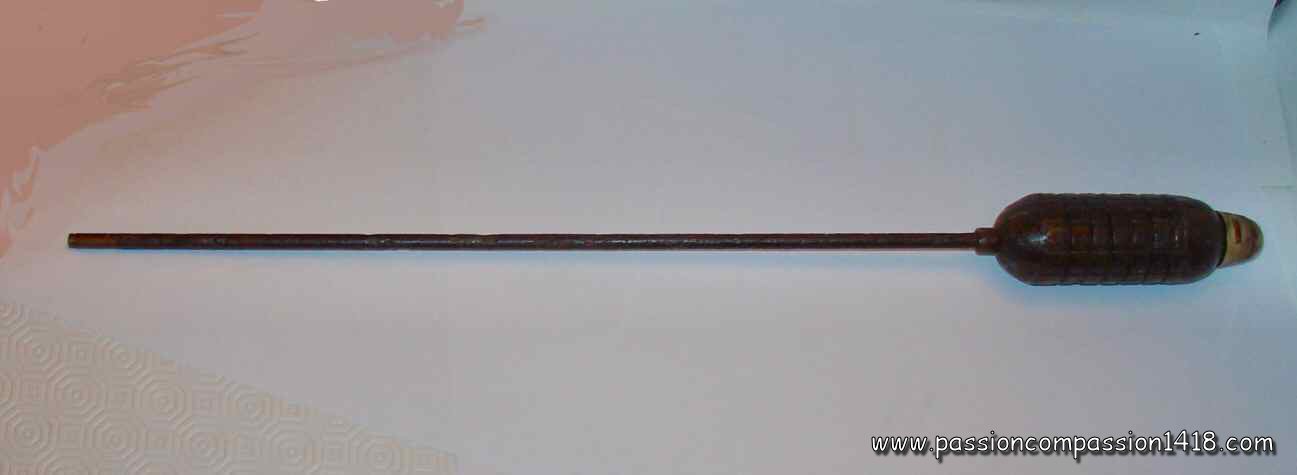 |
The issues induced by the too good ballistic properties of the rifle grenade M 1913 were making this grenade inefficient, so a solution had to be quickly found. Developments led to the birth of a less aerodynamic and more massive grenade that would limit the penetration in the ground at impact, the rifle grenade M 1914 . |
|
Rifle rod grenade M 1914 |
||
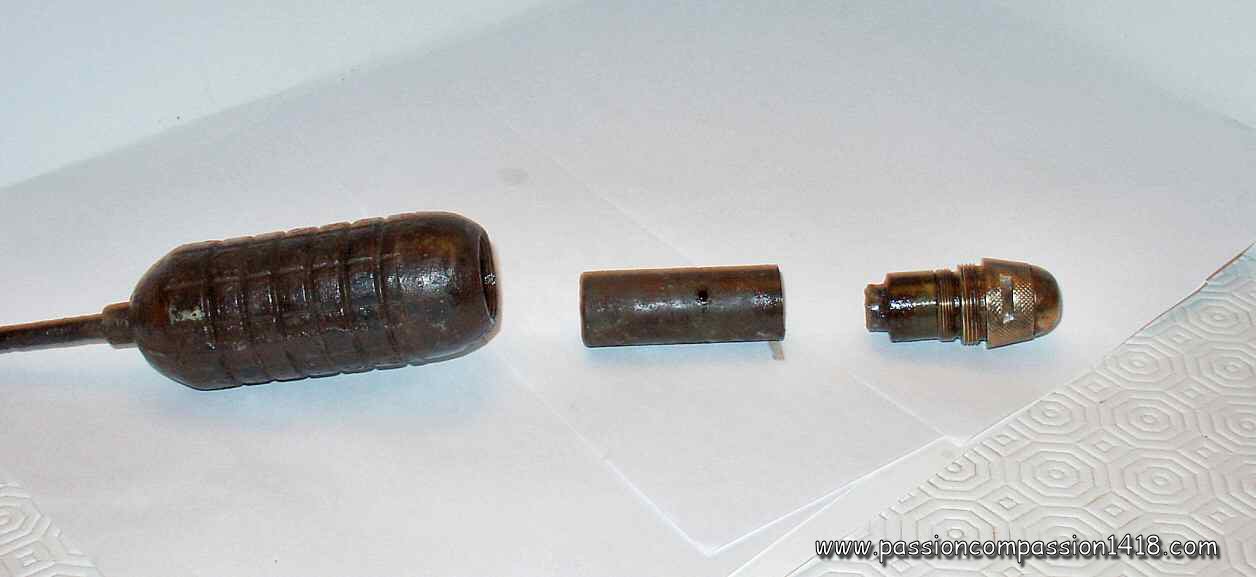 |
||
Rifle rod grenade M 1914 dismantled. See the brass fuse, and the HE relay-charge. |
||
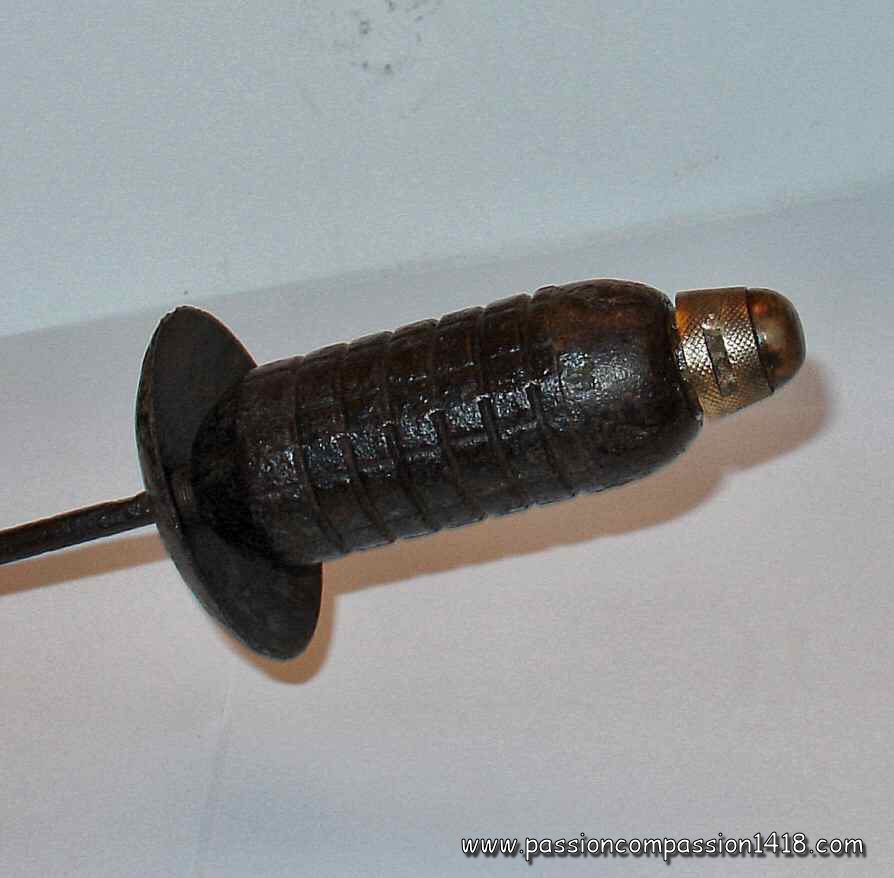 |
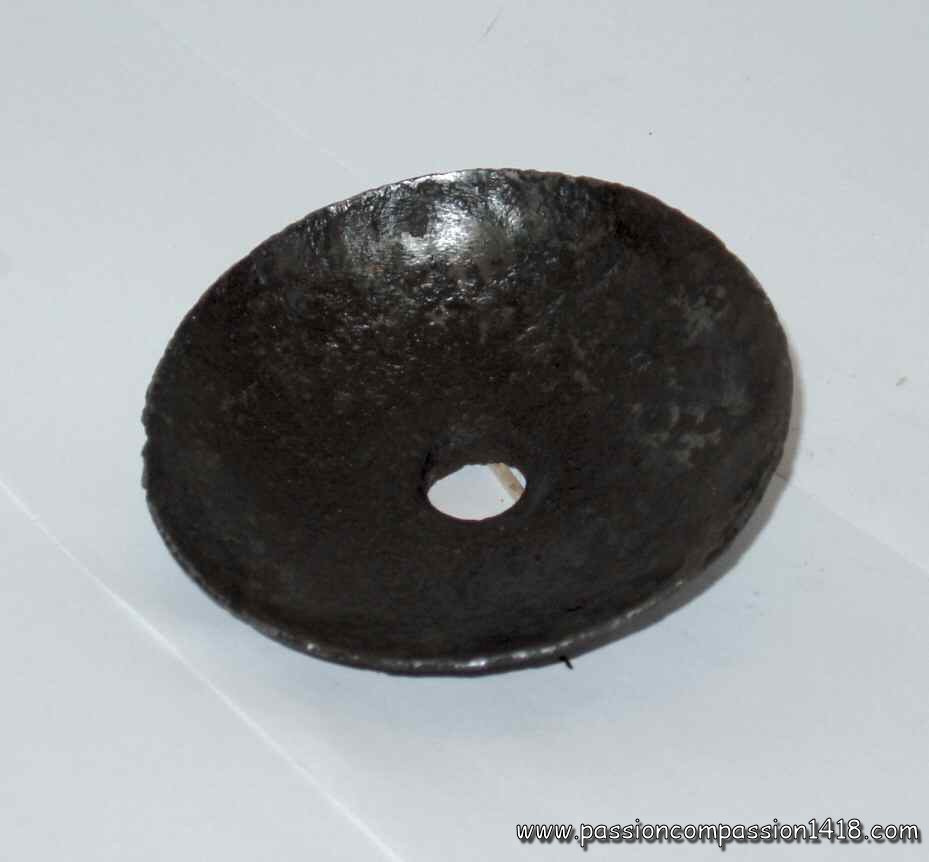 |
|
Rifle rod grenade M 1914 mounted with the optional cupola range limiter |
Rifle rod grenade M 1914 - detail of the range limiter cupola |
|
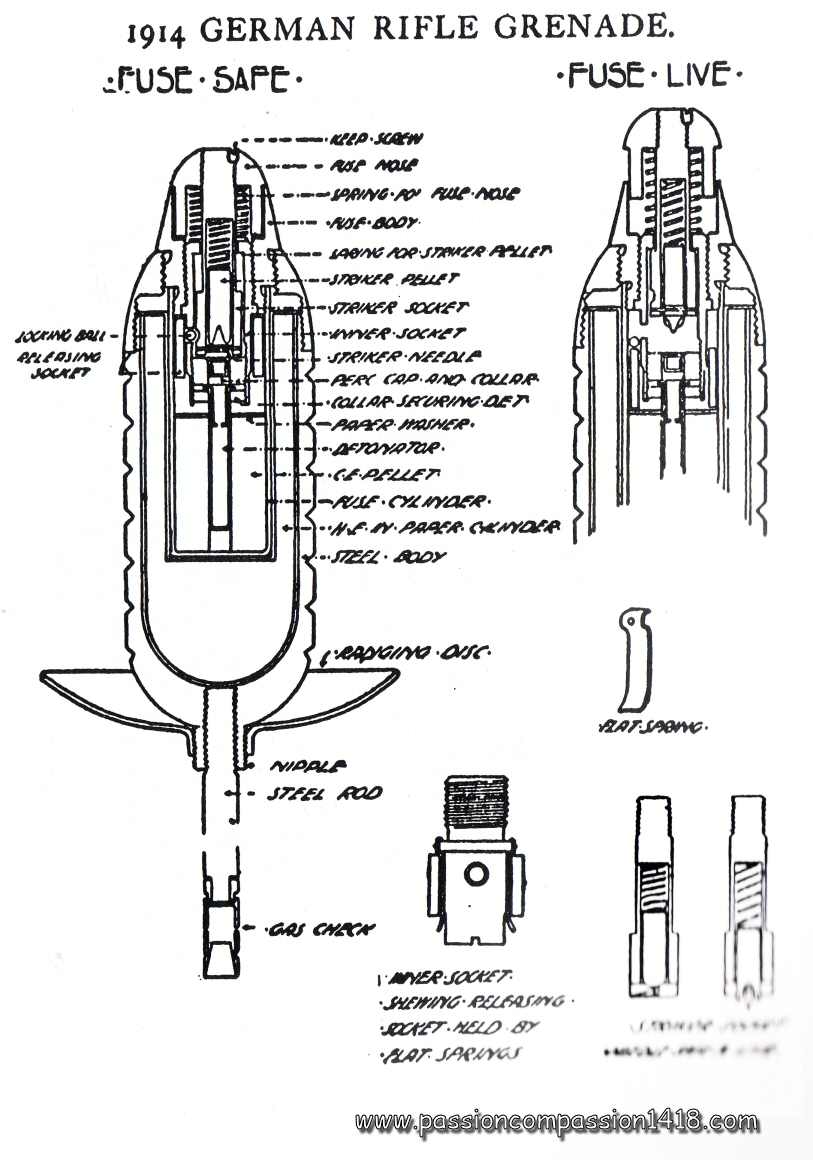 |
||
Rifle rod grenade M 1914 - wartime scheme from a US manual - see the 'safe' and 'armed' fuse position. |
||
Return at the top of the page |
||
Karabingranate 1917 |
||
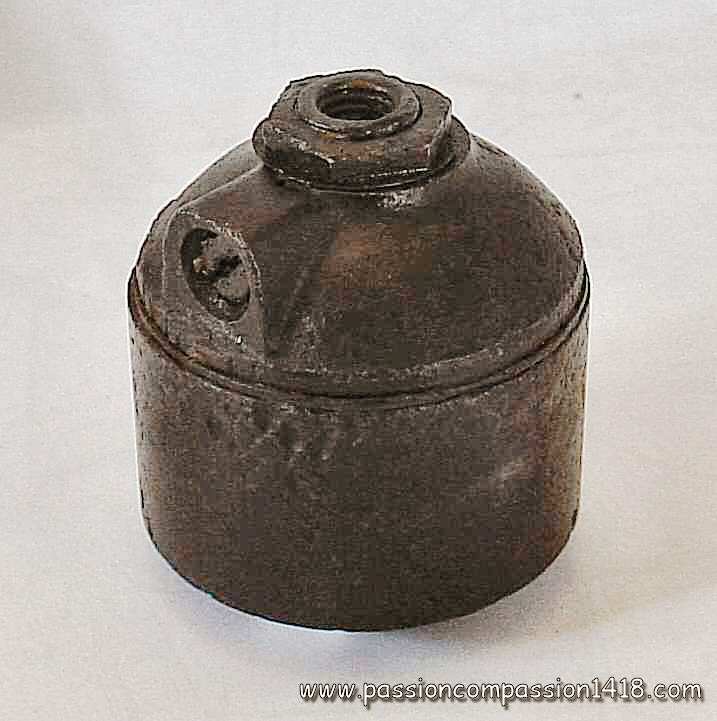 |
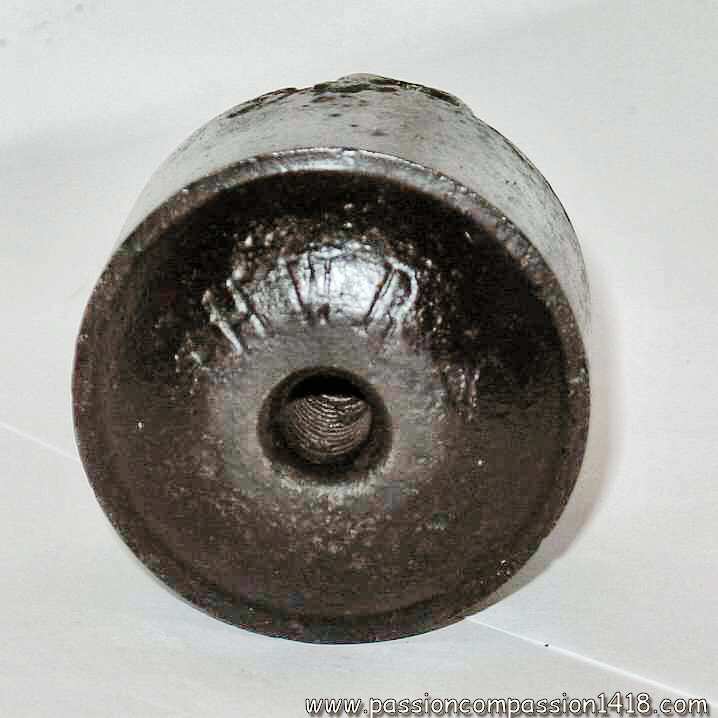 |
The apparition of the remarkable French Viven-Bessière on the battlefields in 1916 was a little revolution in the trench warfare. Safe because not needing to change the rifle ammunitions, easily transportable in large quantities and tactically efficient since it could saturate a target by the fire of several launchers just as a miniature artillery fire, this weapon was copied as soon as 1917 by the German army with the Rifle grenade M1917 ('Karabingranate 1917'). |
Karabingranate 1917 |
Karabingranate 1917 - bottom view with manufacture marks |
|
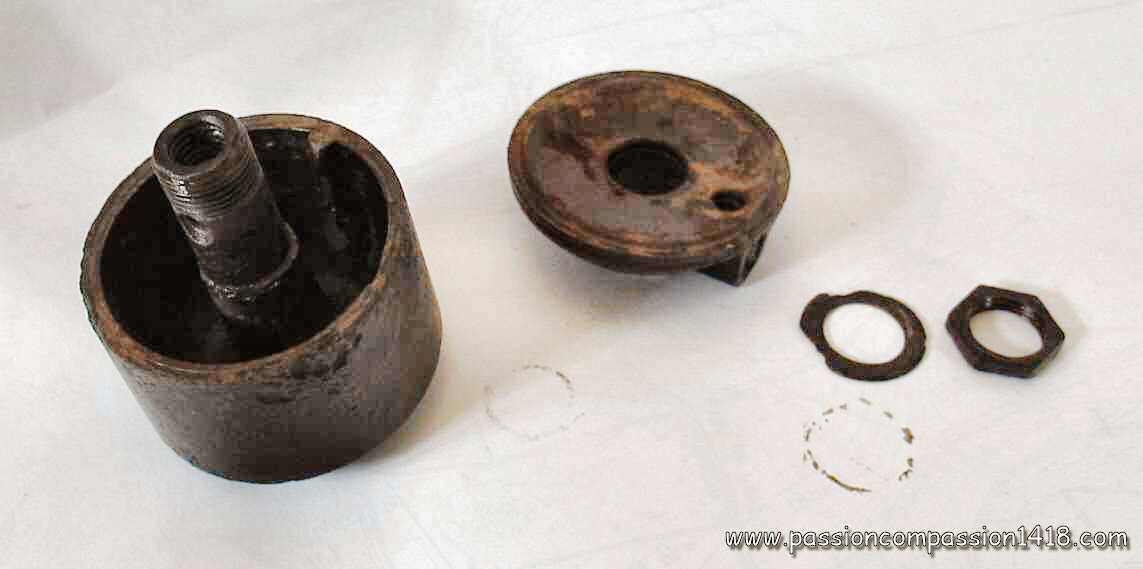 |
||
Karabingranate 1917 dismantled |
||
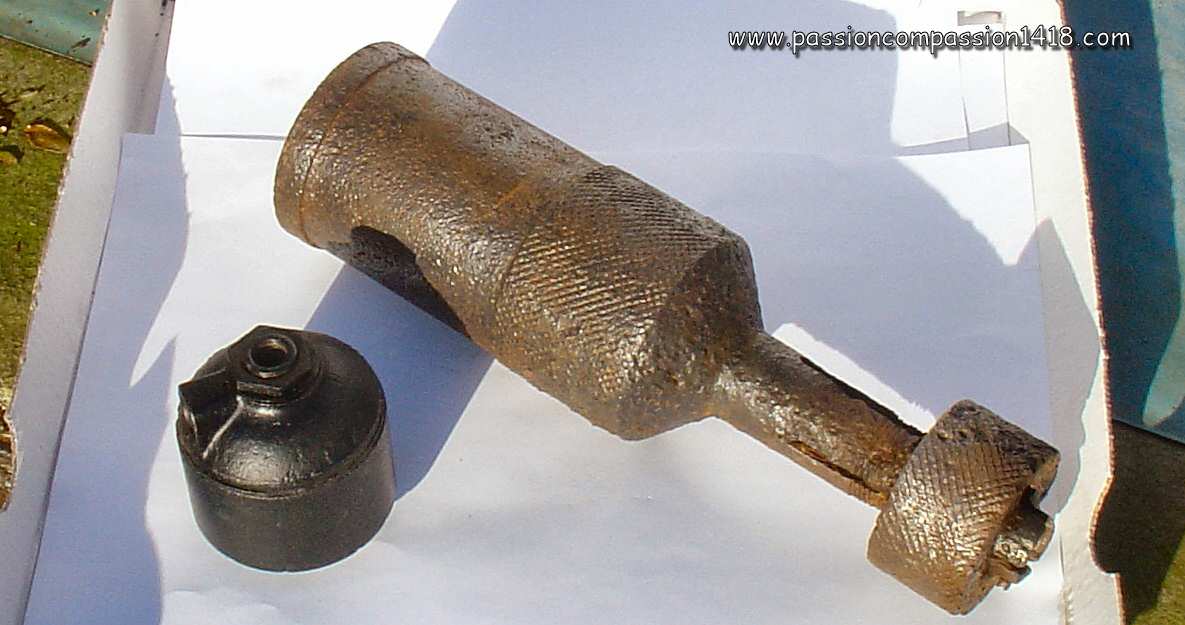 |
||
Karabingranate 1917 with the mauser gun launcher |
||
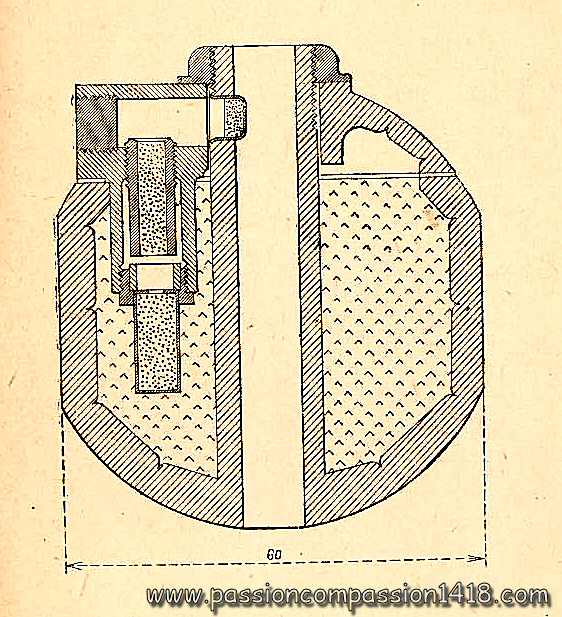 |
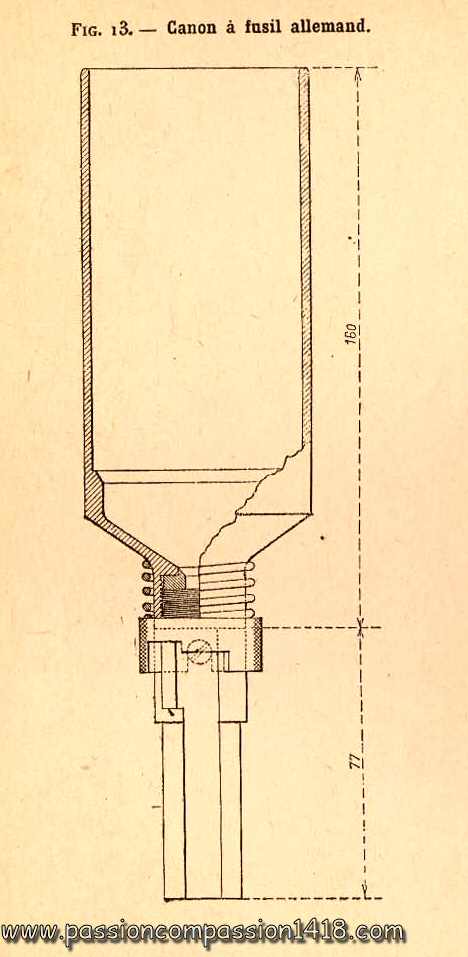 |
|
Karabingranate 1917 - wartime scheme |
Karabingranate 1917 sleeve - wartime scheme |
|
Return at the top of the page |
||
Granatwerfer ('Priest Mortar') Granate |
||
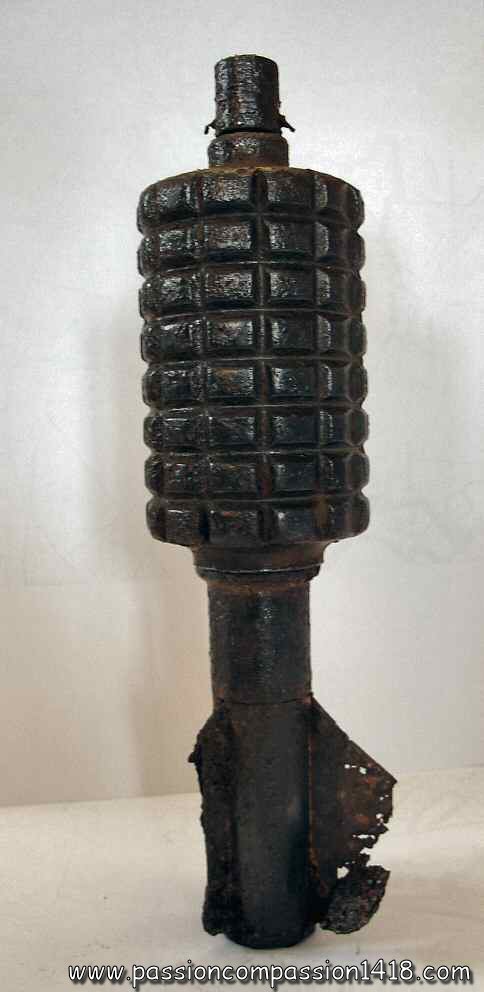 |
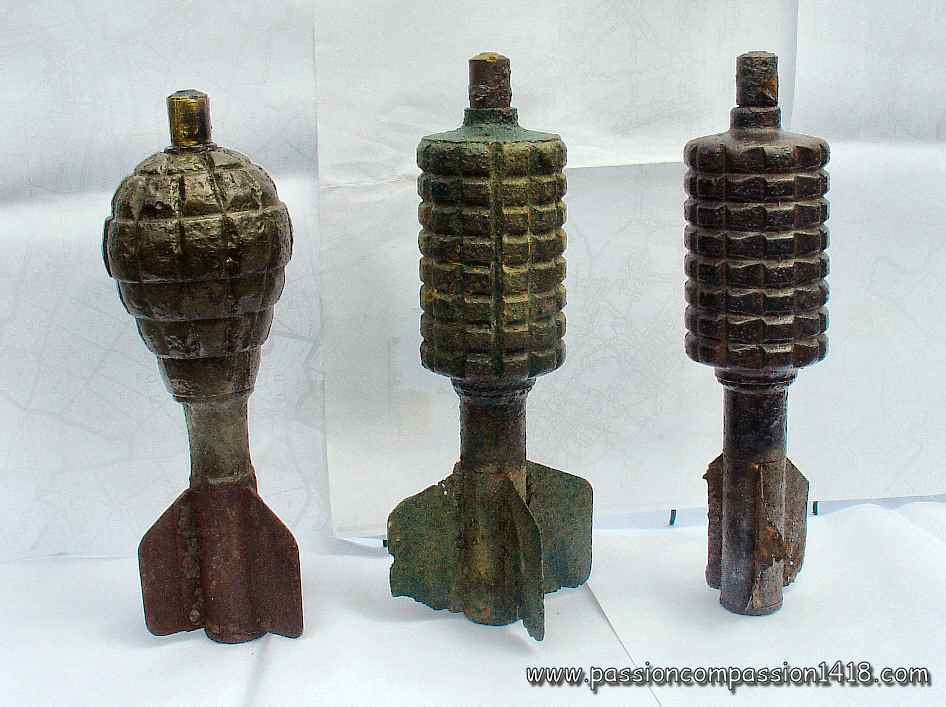 |
At the border between grenade launcher and minenwerfers, the Priest Morser is a little trench weapon designed in 1915 by Austria (presimingly by a priest, hence the name). Called Granatwerfer (grenade launcher) by the Germans that massively used it, this light (45 kg) and easily transportable weapon was simply composed with a base plate supporting a orientable mandrel equipped with a spring percussion mechanism.
|
Family picture of granatwerfer explosive projectiles : 3 or 4 winglets, ovoid or cylindrical bodies |
||
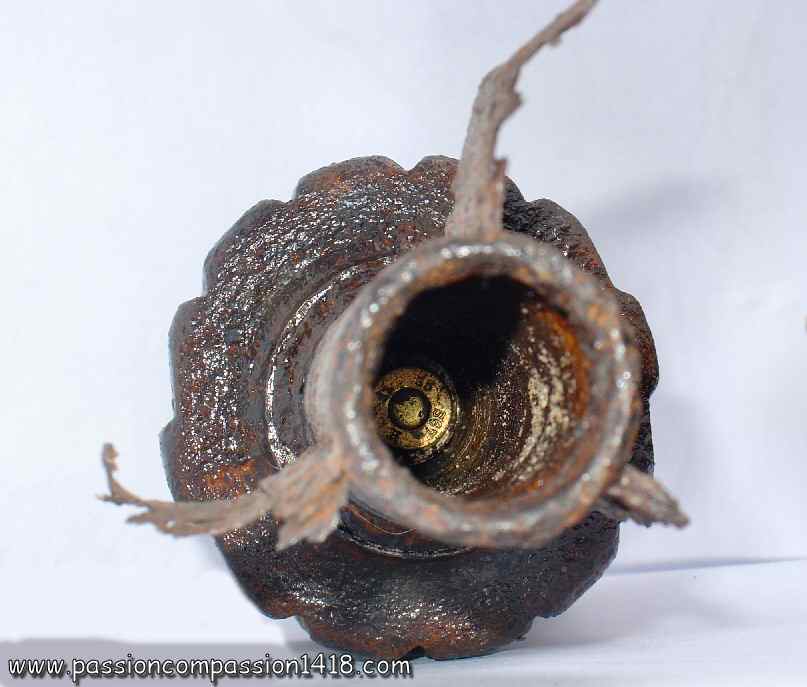 |
||
Granatwerfer cylindrical winged explosive projectile |
Zoom on the propellant cartridge inside the granatwerfer projectile tail (Observed in Champagne - Mont Tétu) |
|
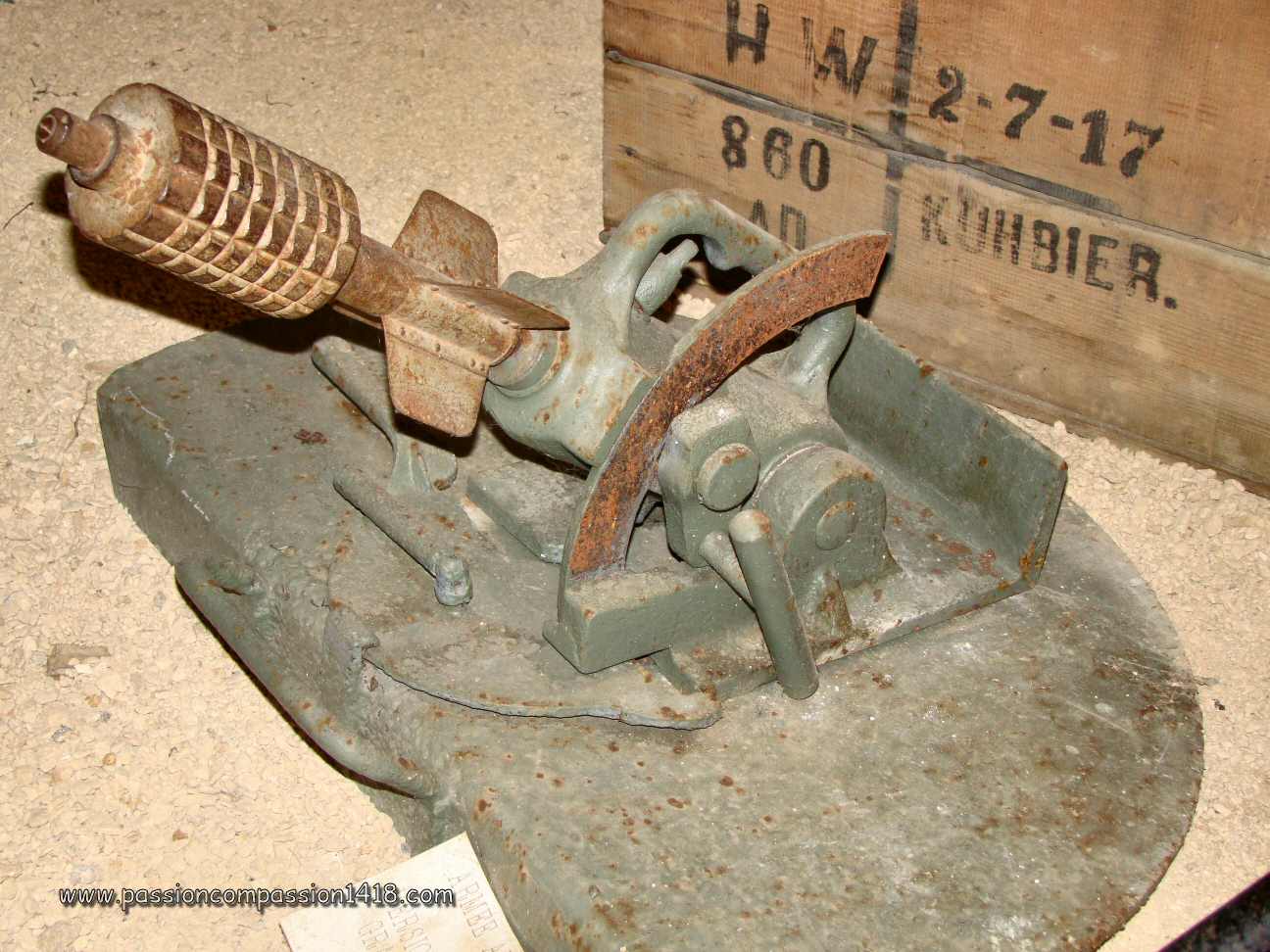 |
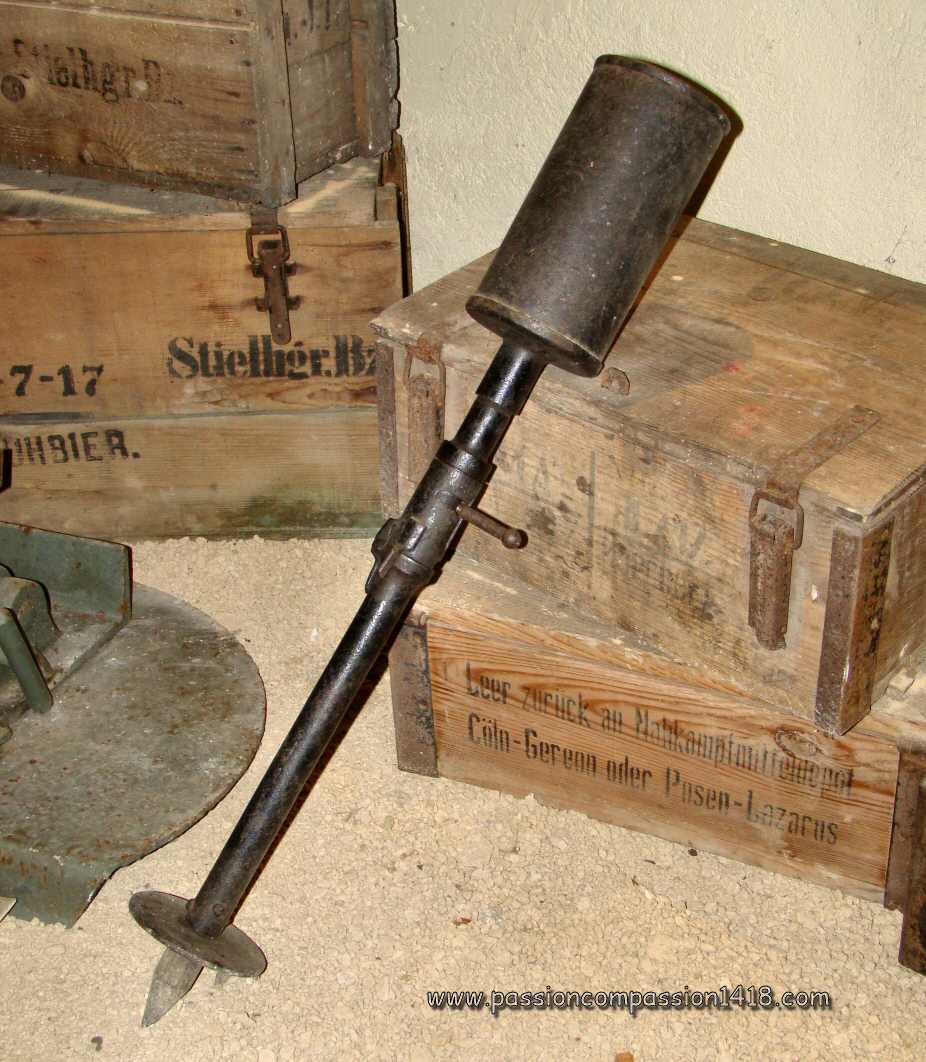 |
|
Granatwerfer : the launcher, named 'Priest Mortar', from an Austrian inventor (in a Lorraine museum) |
Granatwerfer : the simplified launcher, extremely mobile (in a Lorraine museum) |
|
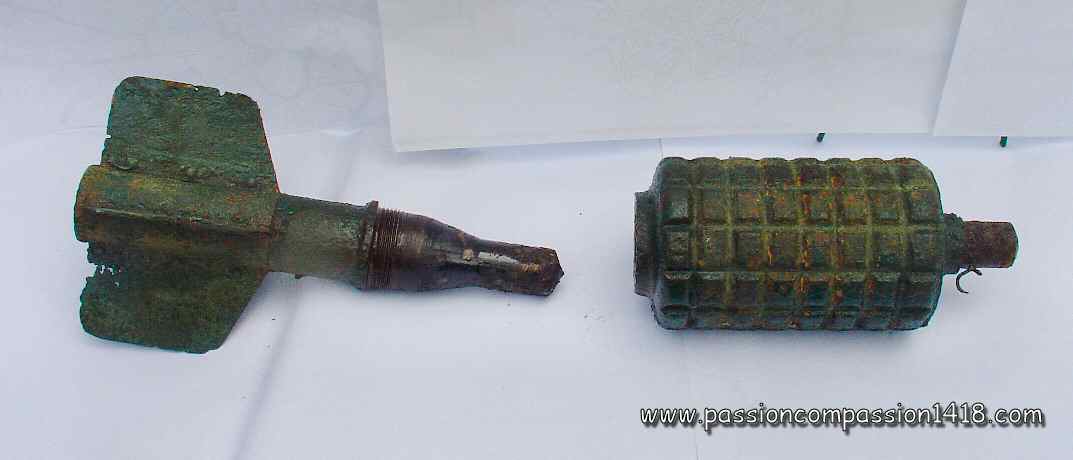 |
||
Granatwerfer projectile dismantled : view to the propellant cartridge shaft |
||
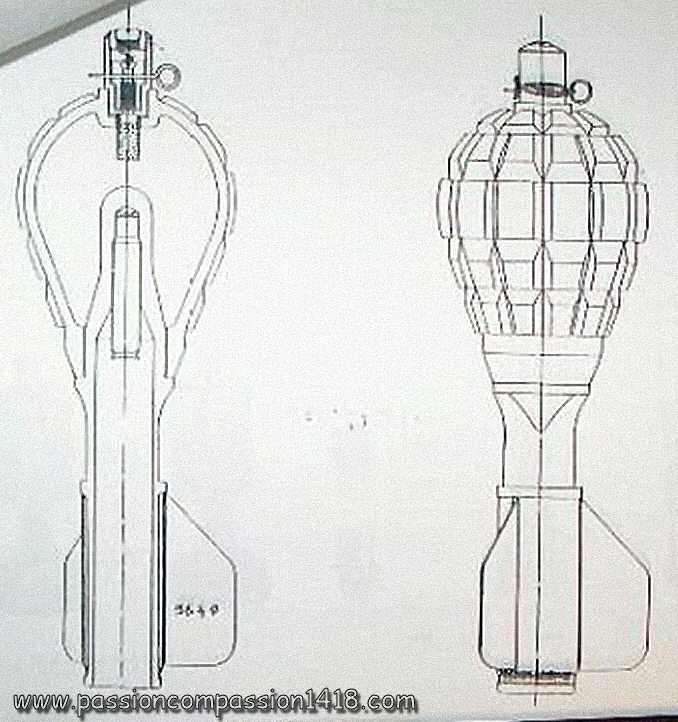 |
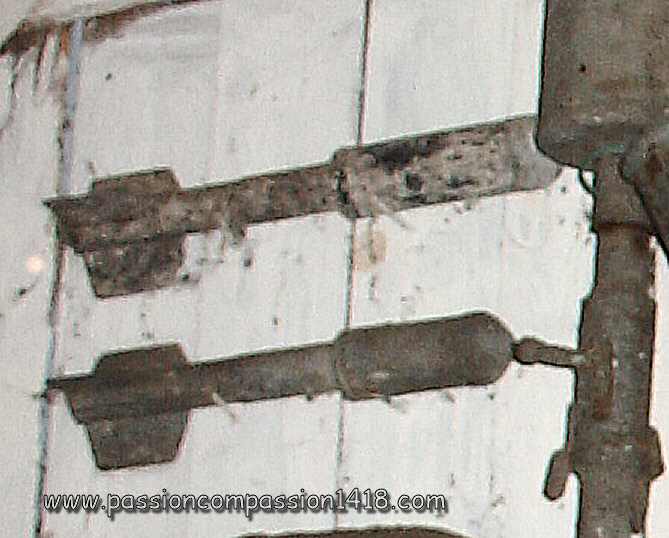 |
|
Granatwerfer projectile - wartime scheme of the ovoid explosive projectile (same inside organisation than the cylindrical explosive grenade) |
Lighting or message-bearer Granatwerfer projectiles (private museum in Champagne) |
|
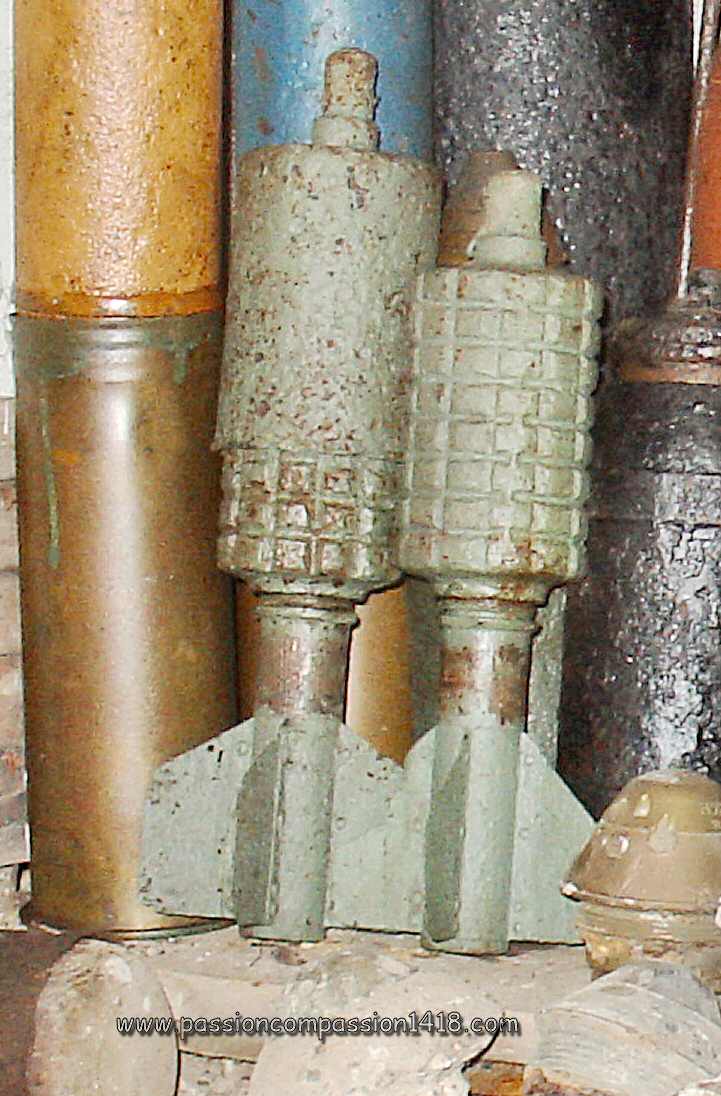 |
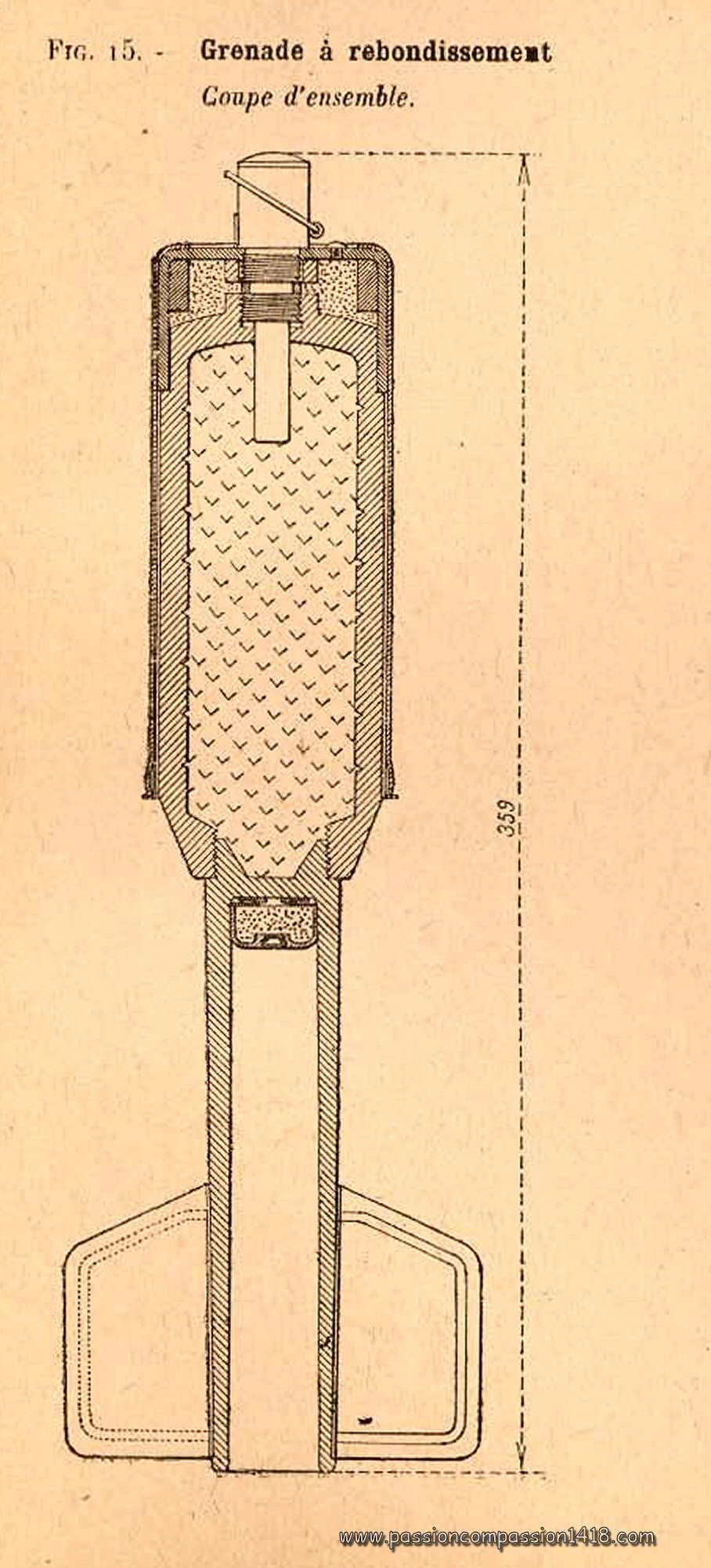 |
|
Rebounding Granatwerfer projectile (left) and classical one (right) |
rebounding explosive Granatwerfer projectile - wartime scheme |
|
Return at the top of the page |
||
Schnellwerfer Granate |
||
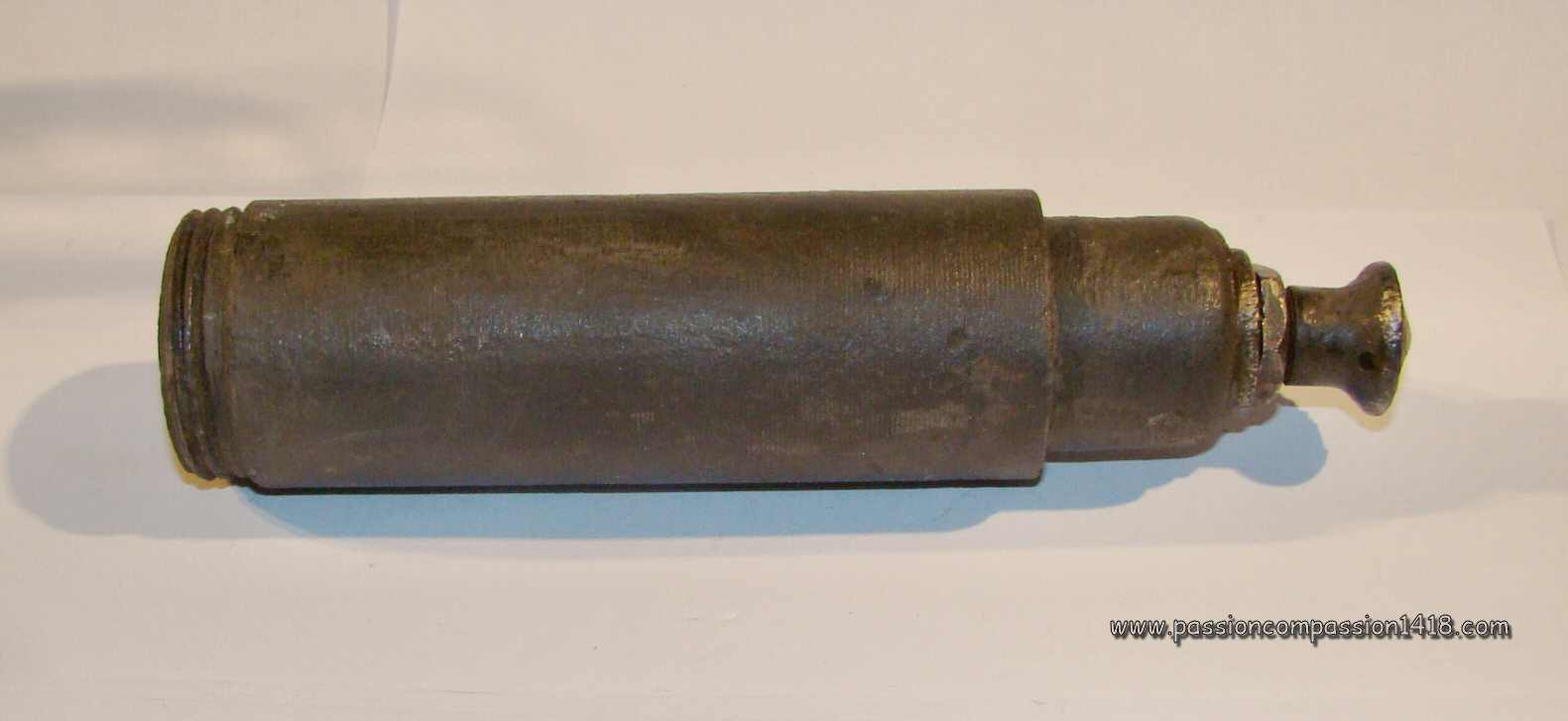 |
There are little details known upon this grenade launcher, that has been made by Austria, and probably used by Germans only in the Argonne forest where its projectiles can be observed. The Schnellwerfer was designed to quickly fire 6 grenades at a maximum fire rate of 50 to 120 shots per minute and at a range of 200 to 500 meters, probably giving very efficient defensive properties. |
|
Grenade for Schnellwerfer observed in Argonne, France |
||
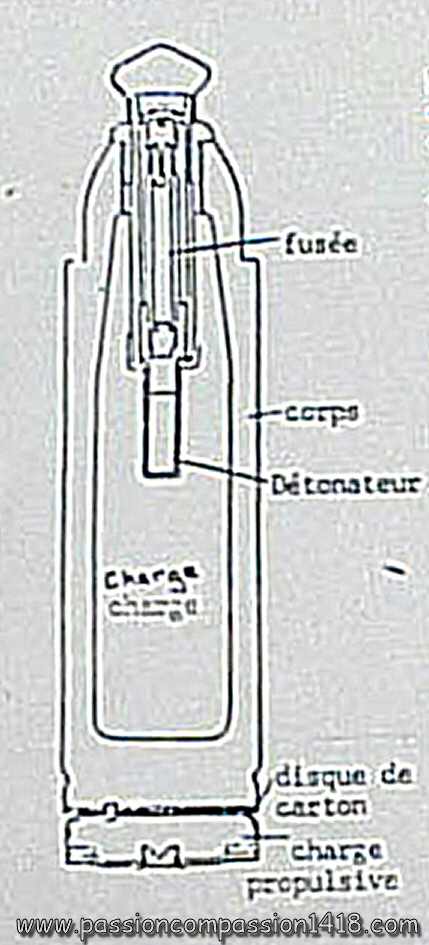 |
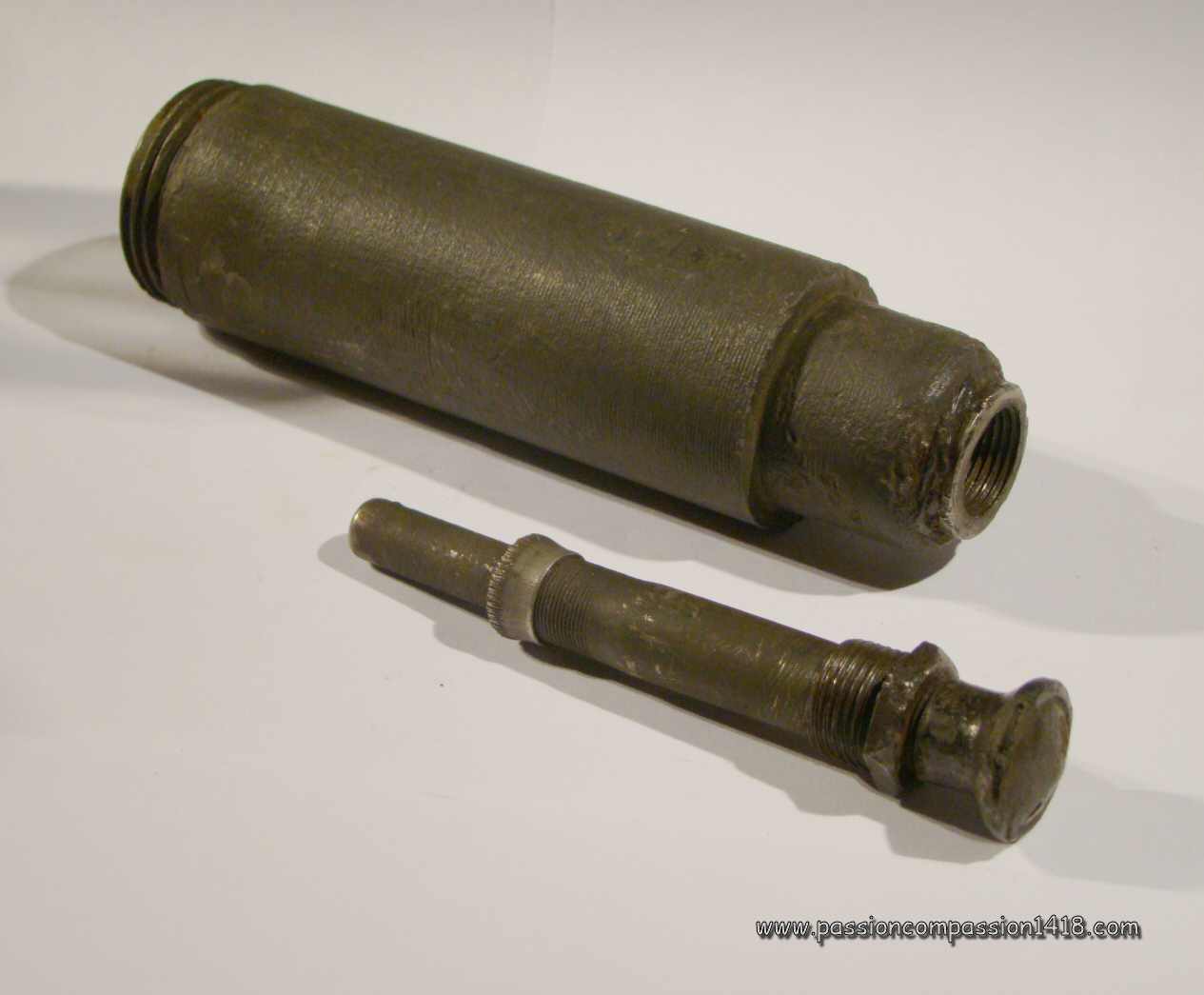 |
|
Grenade for Schnellwerfer. |
||
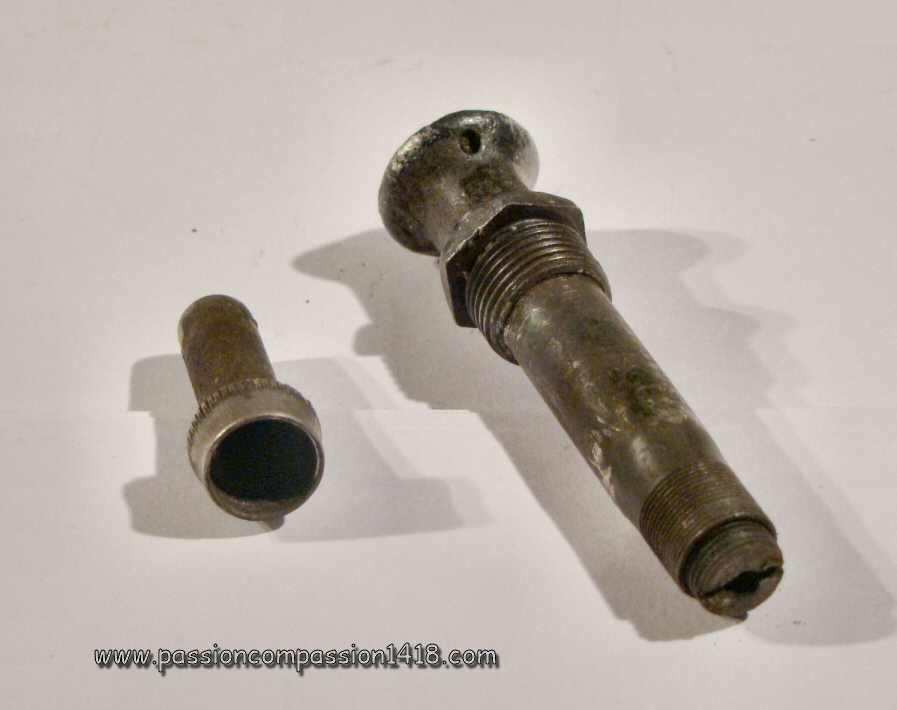 |
||
Grenade for Schnellwerfer : projectile scheme |
Grenade for Schnellwerfer. Dismantled 'fuze' and detonator. |
|
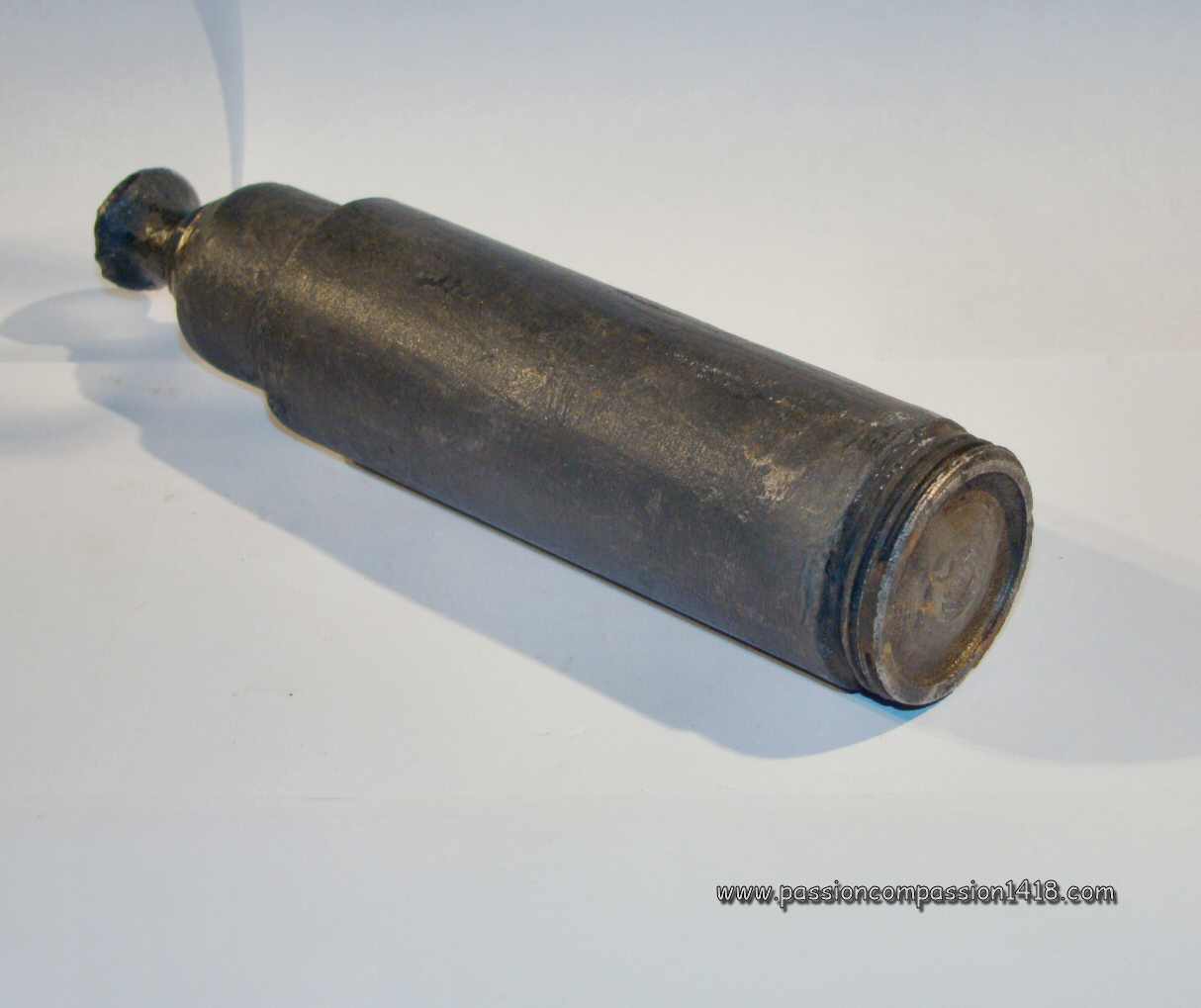 |
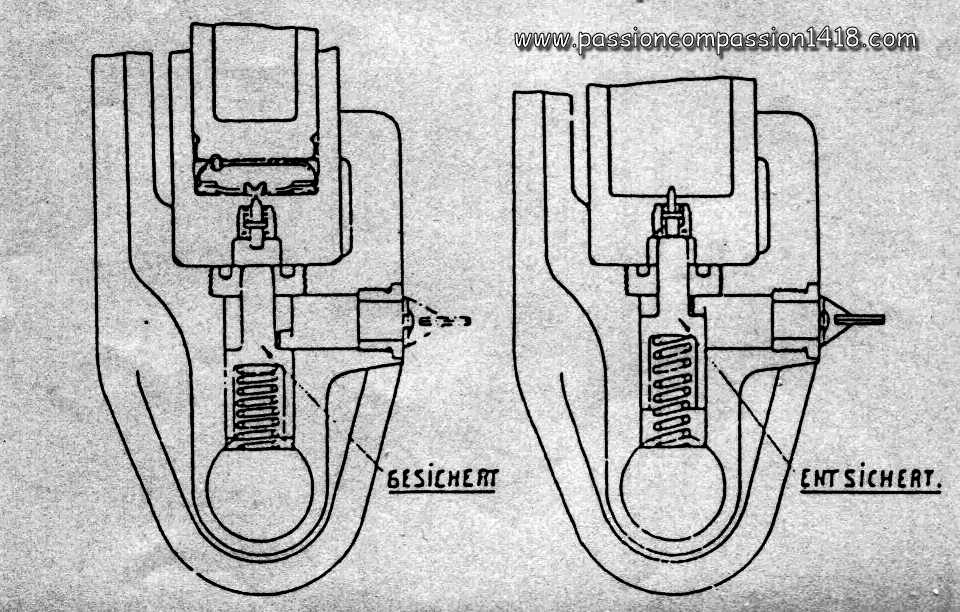 |
|
Grenade for Schnellwerfer. Bottom view - the screwable cup with the propellant stuff has disappeared |
Percussion mechanism of the Schnellwerfer |
|
 |
||
Schnellwerfer, its sliding container is loaded with 6 projectiles |
||
Return at the top of the page |
||